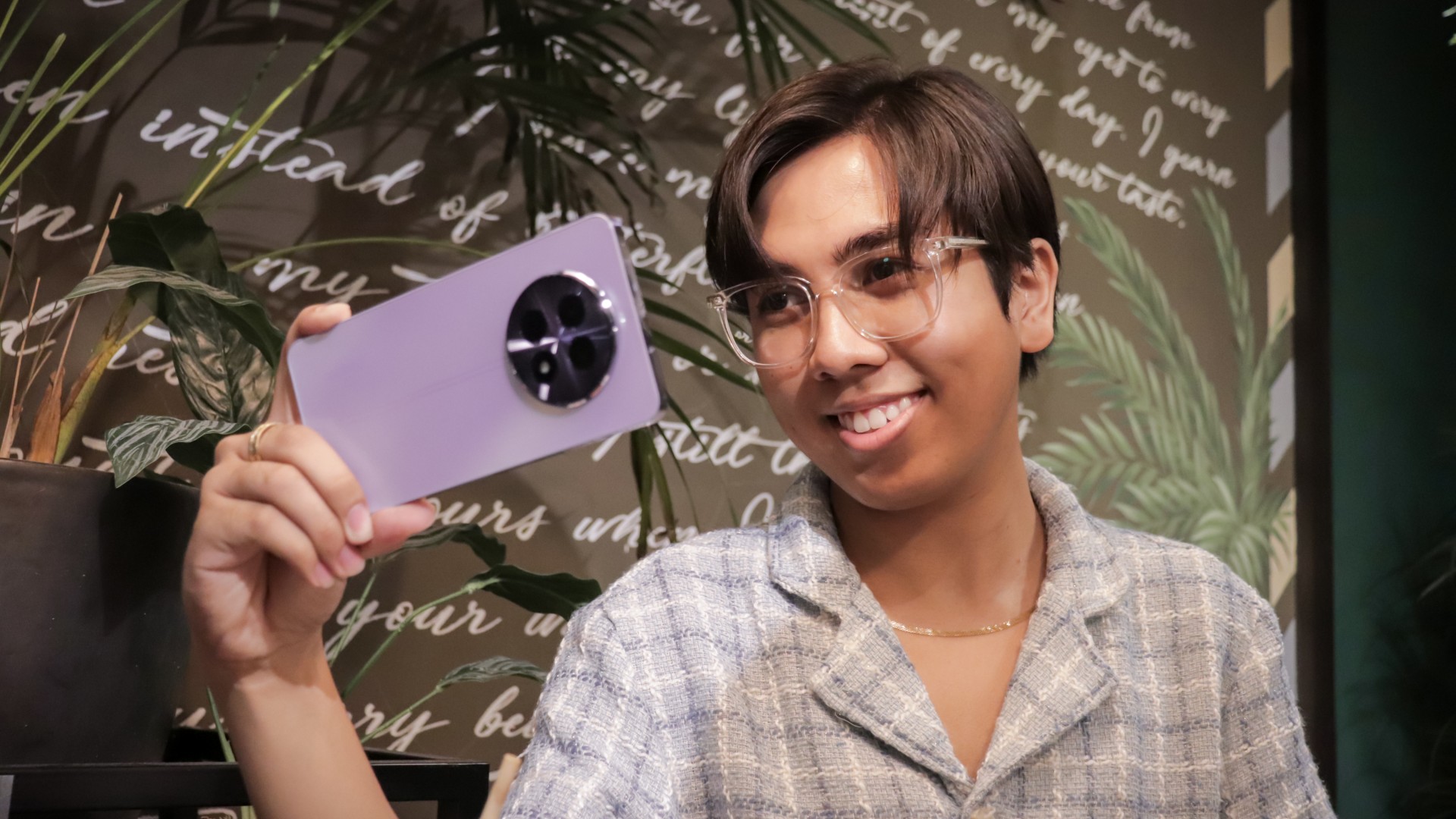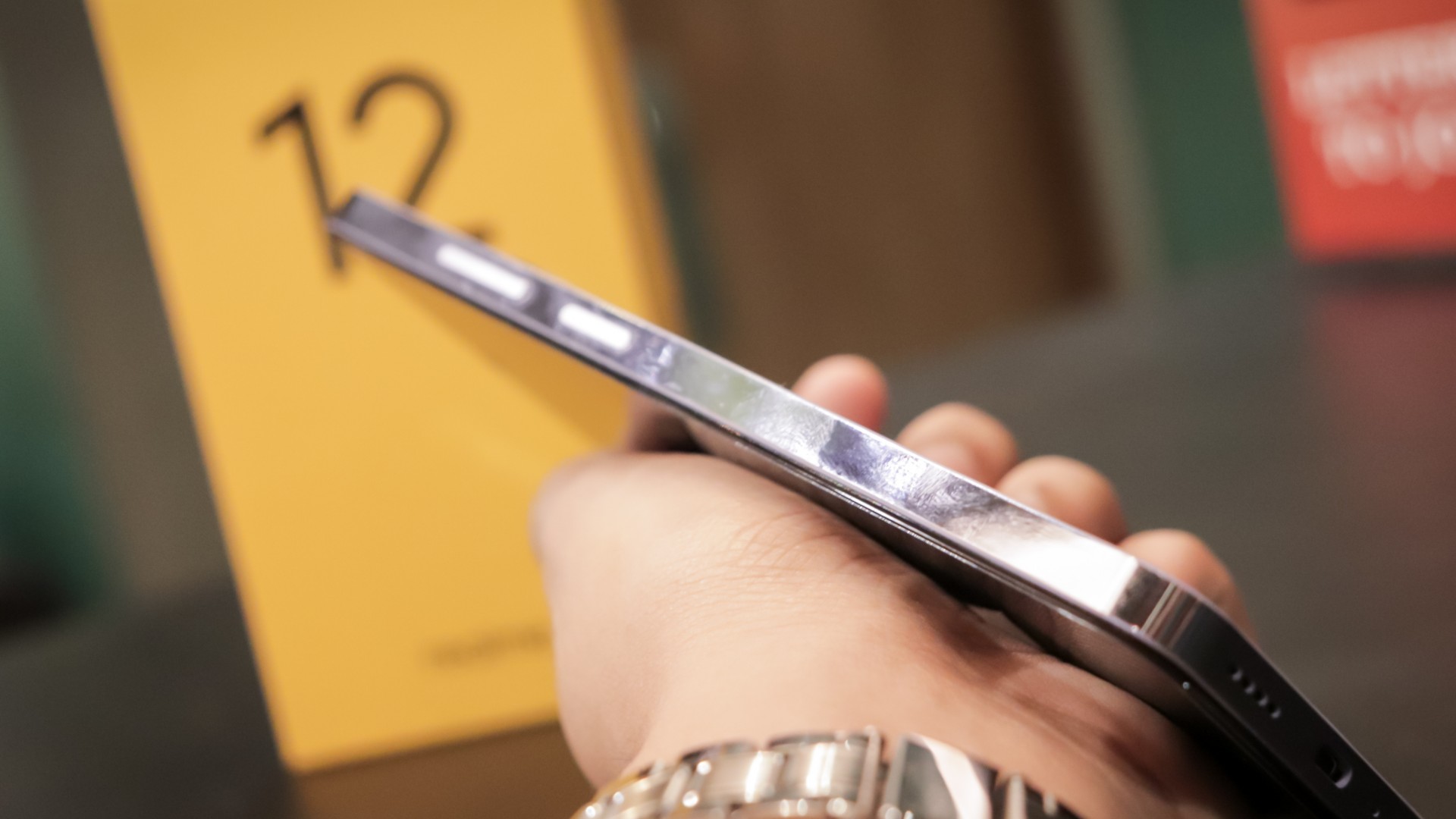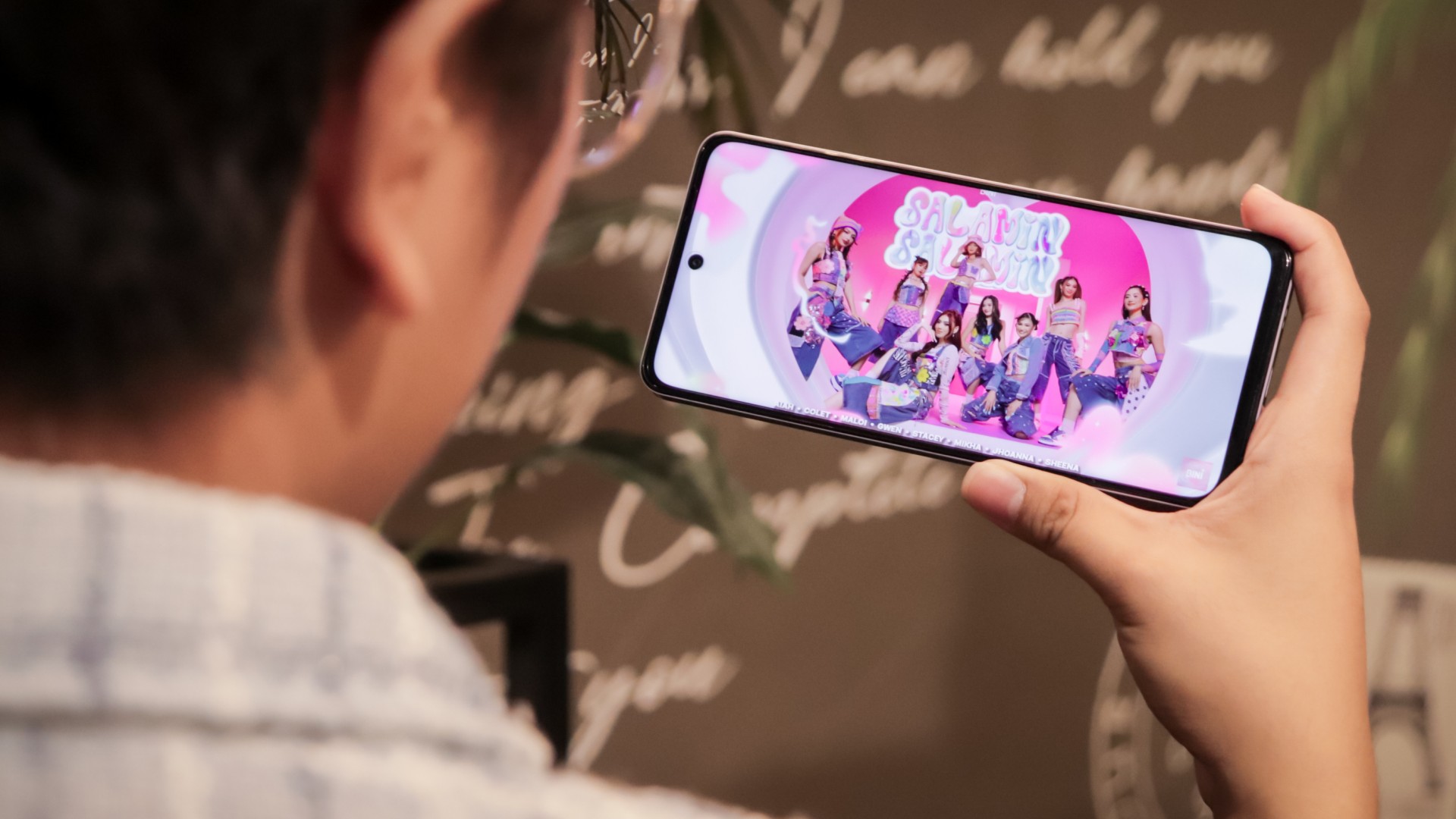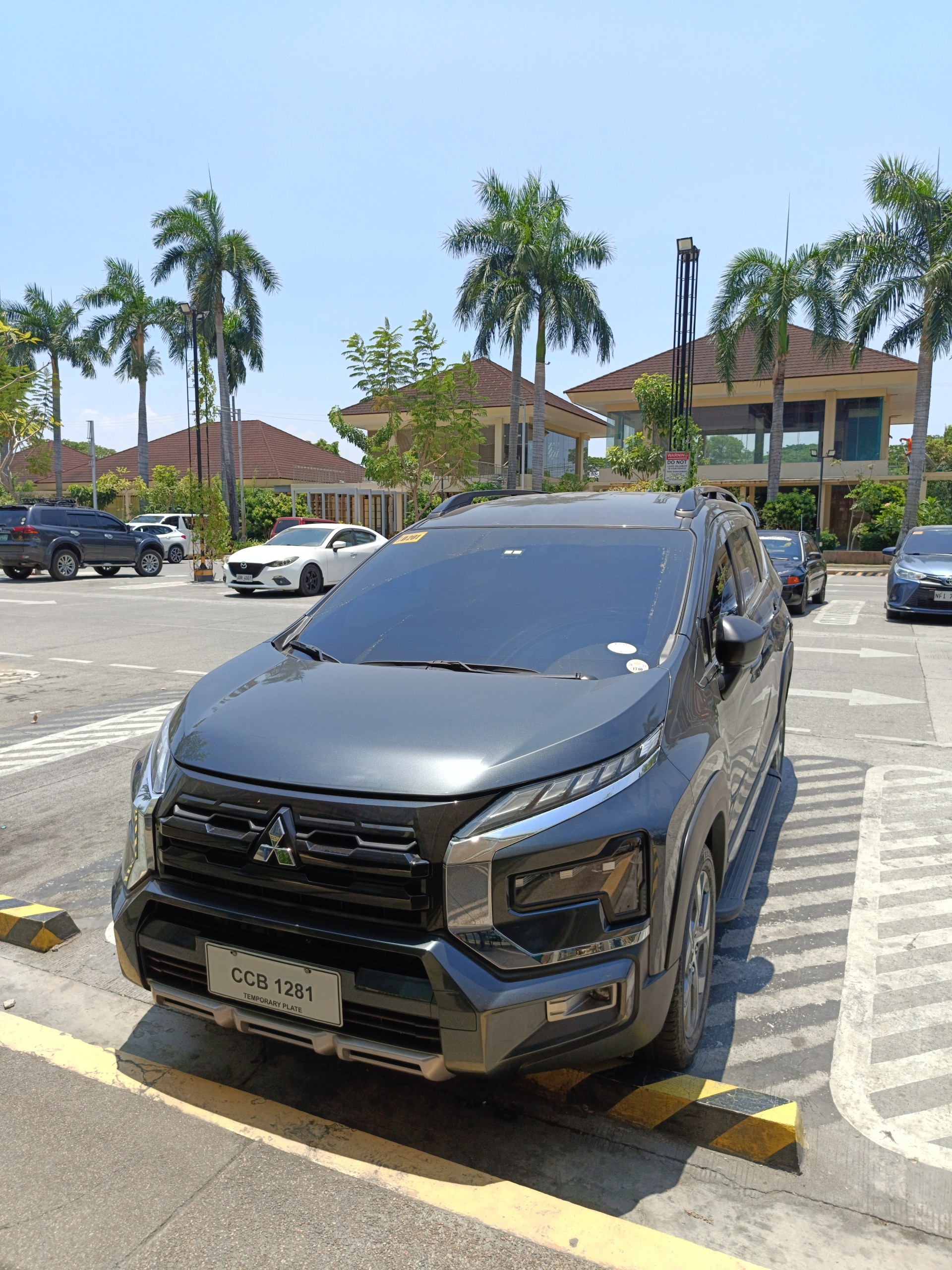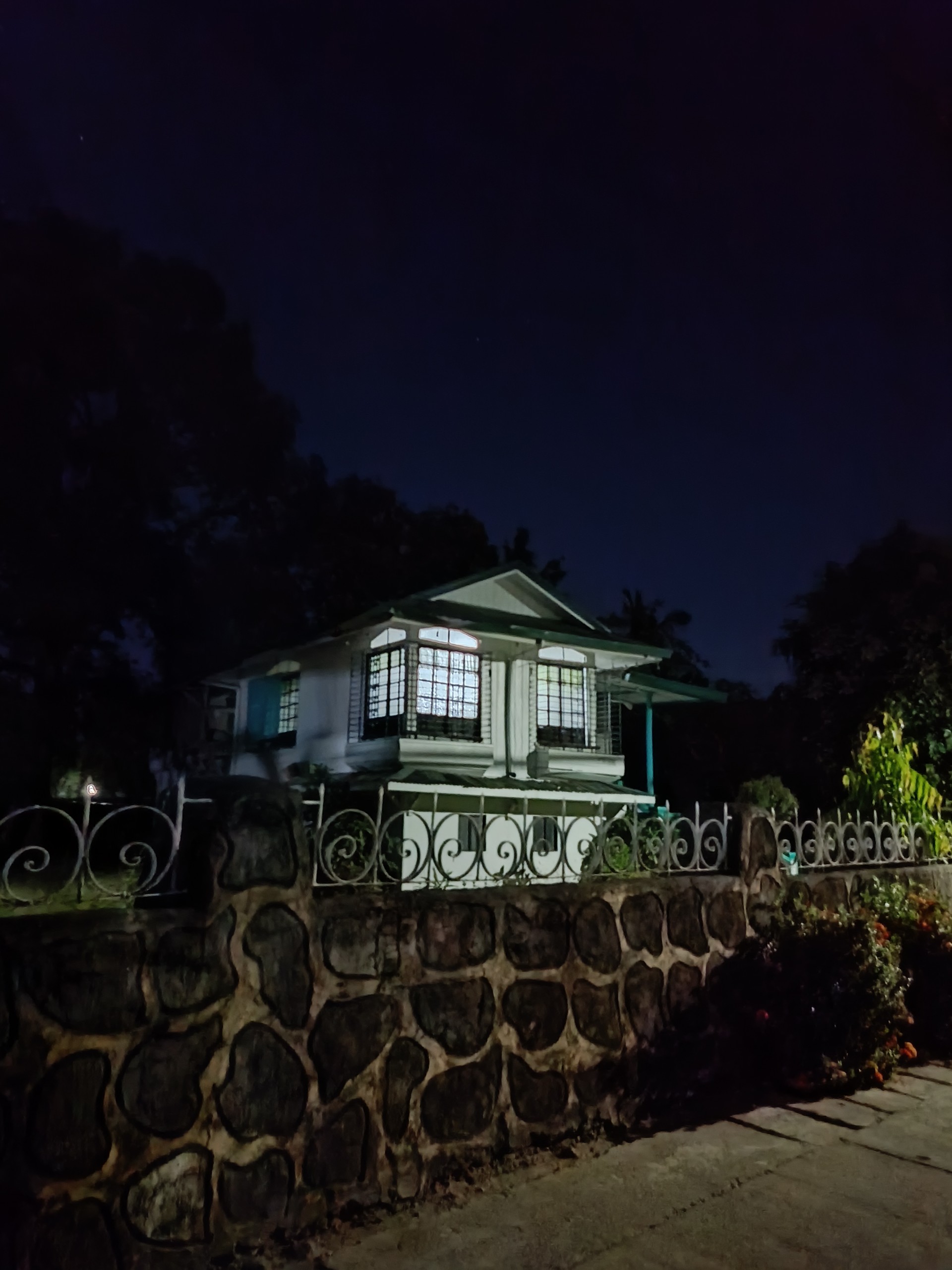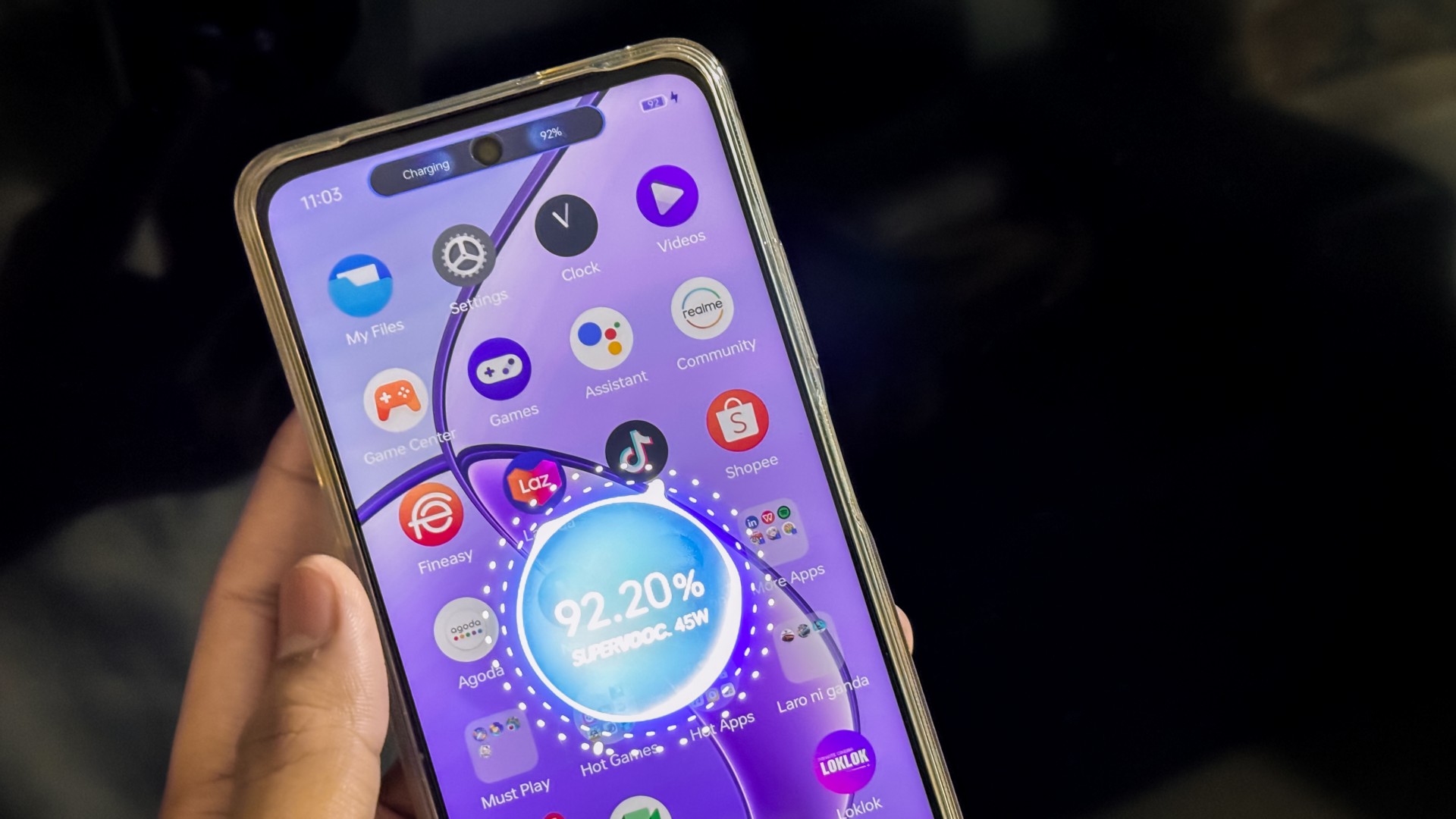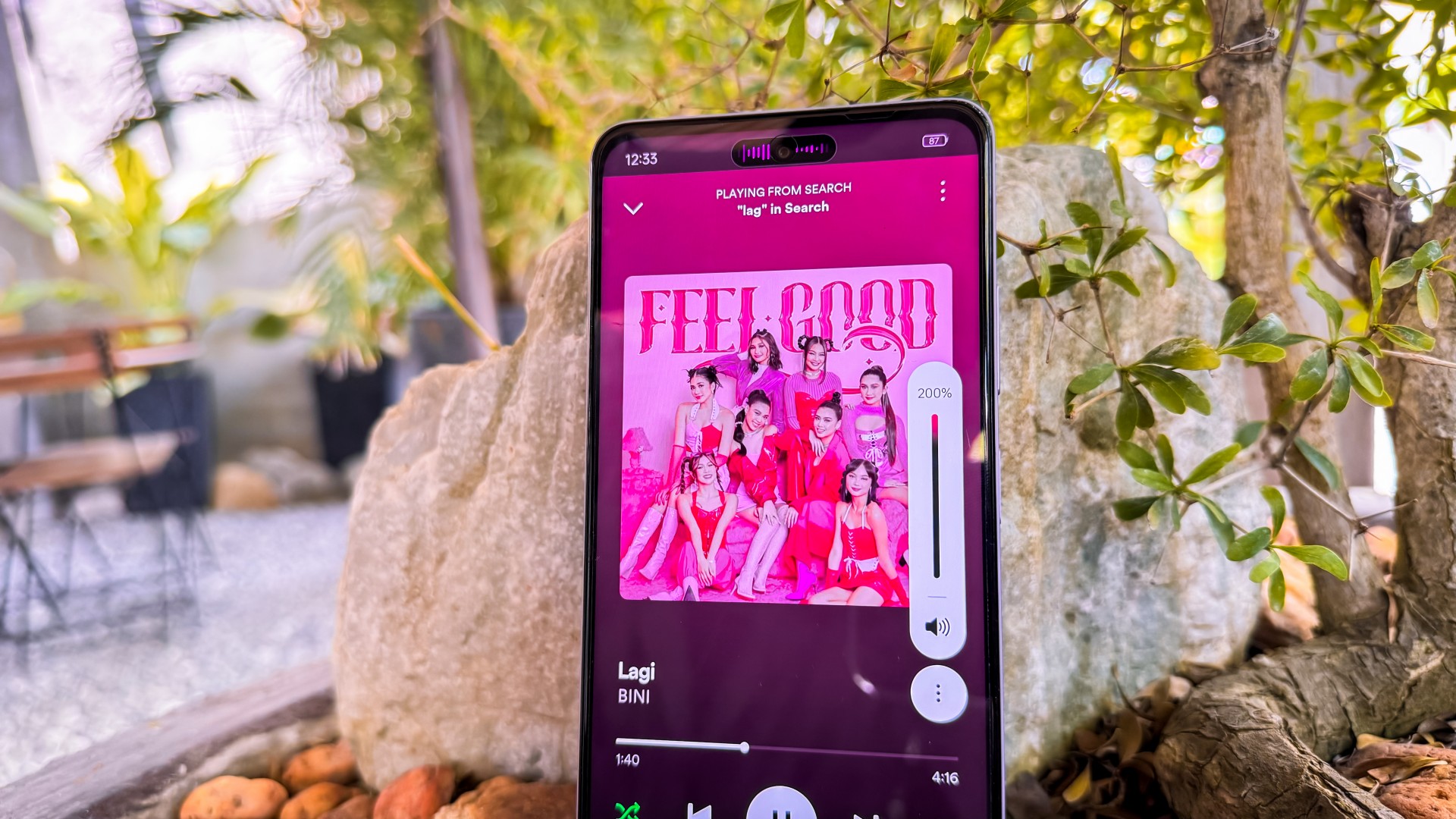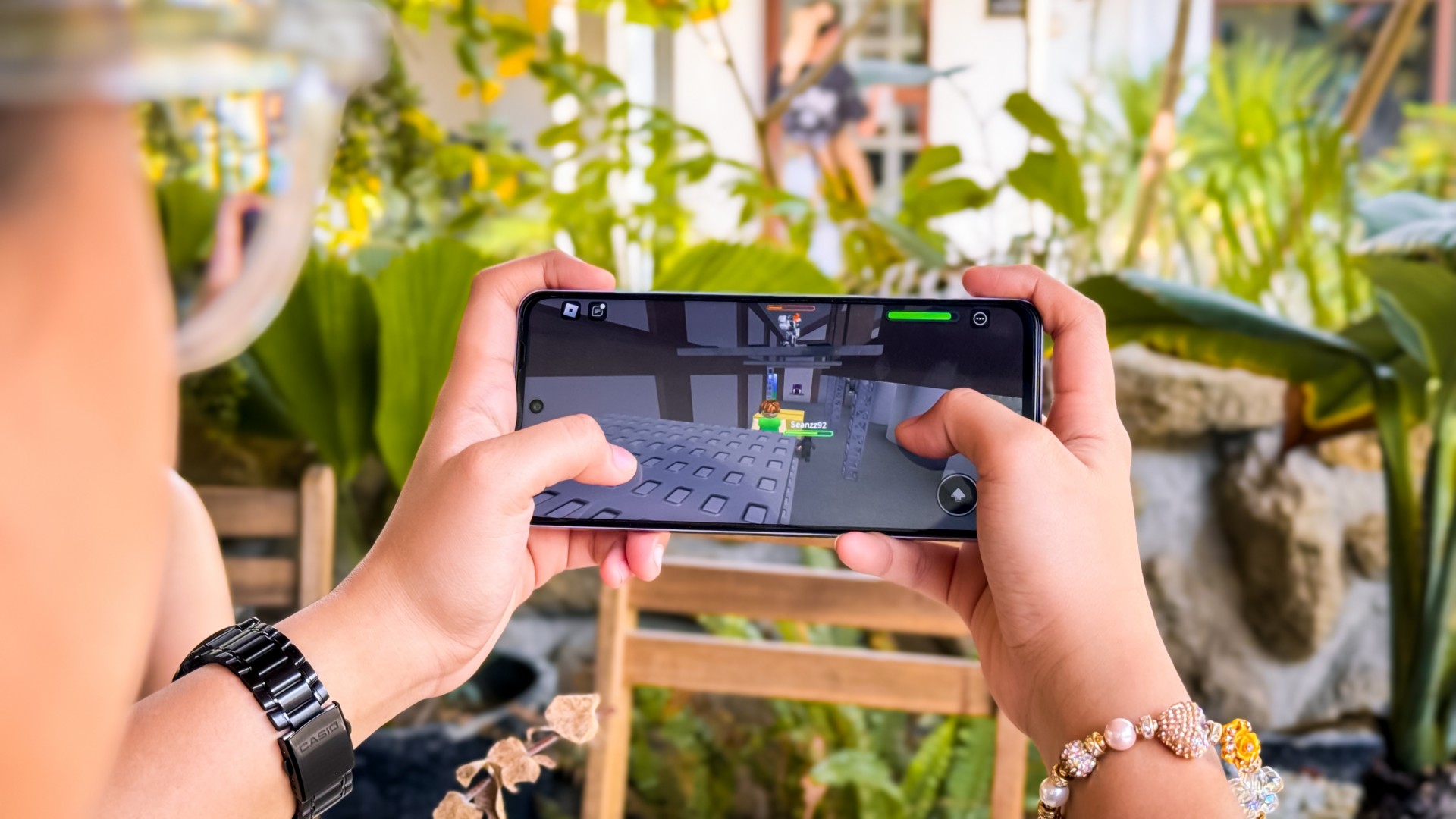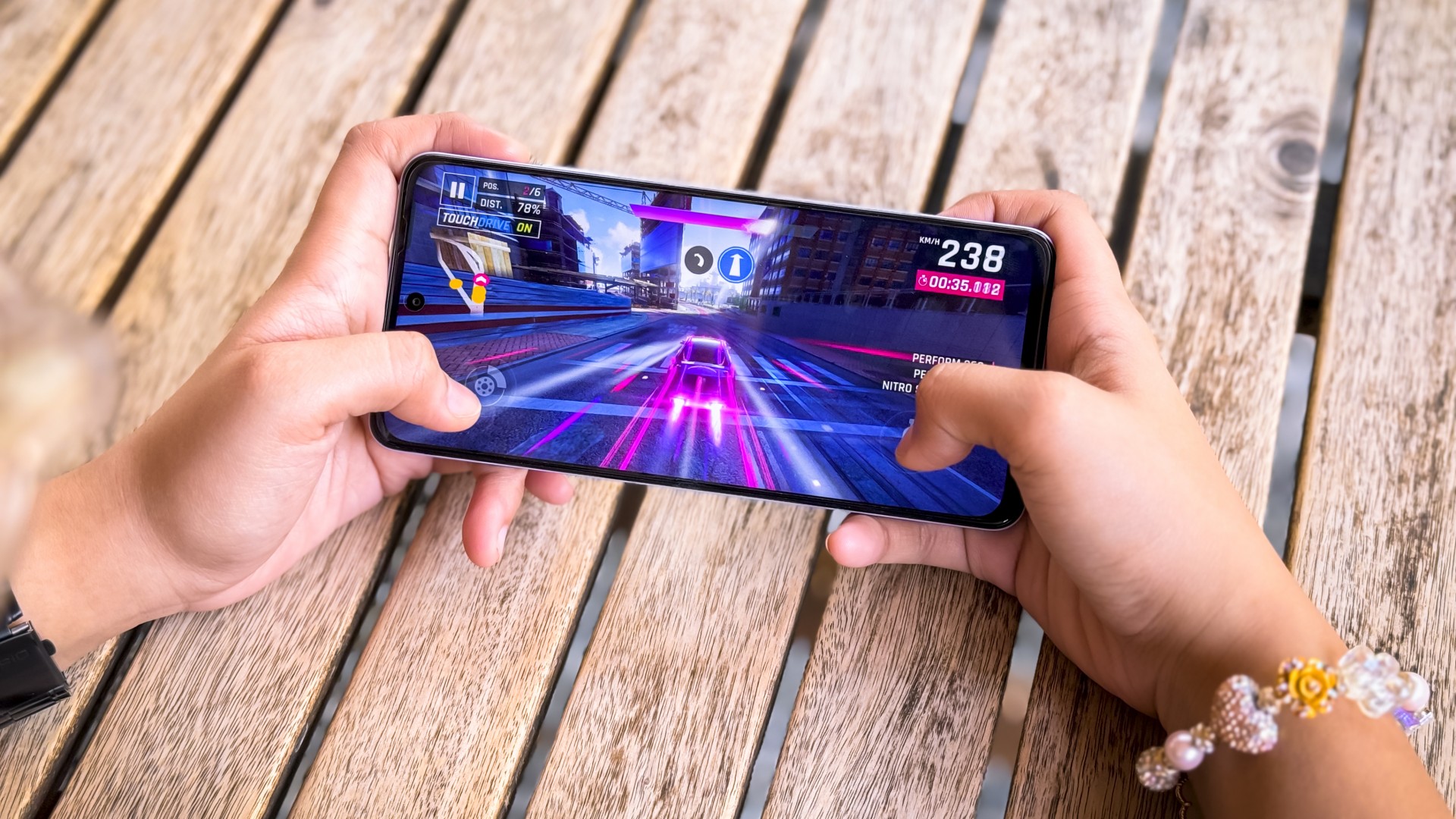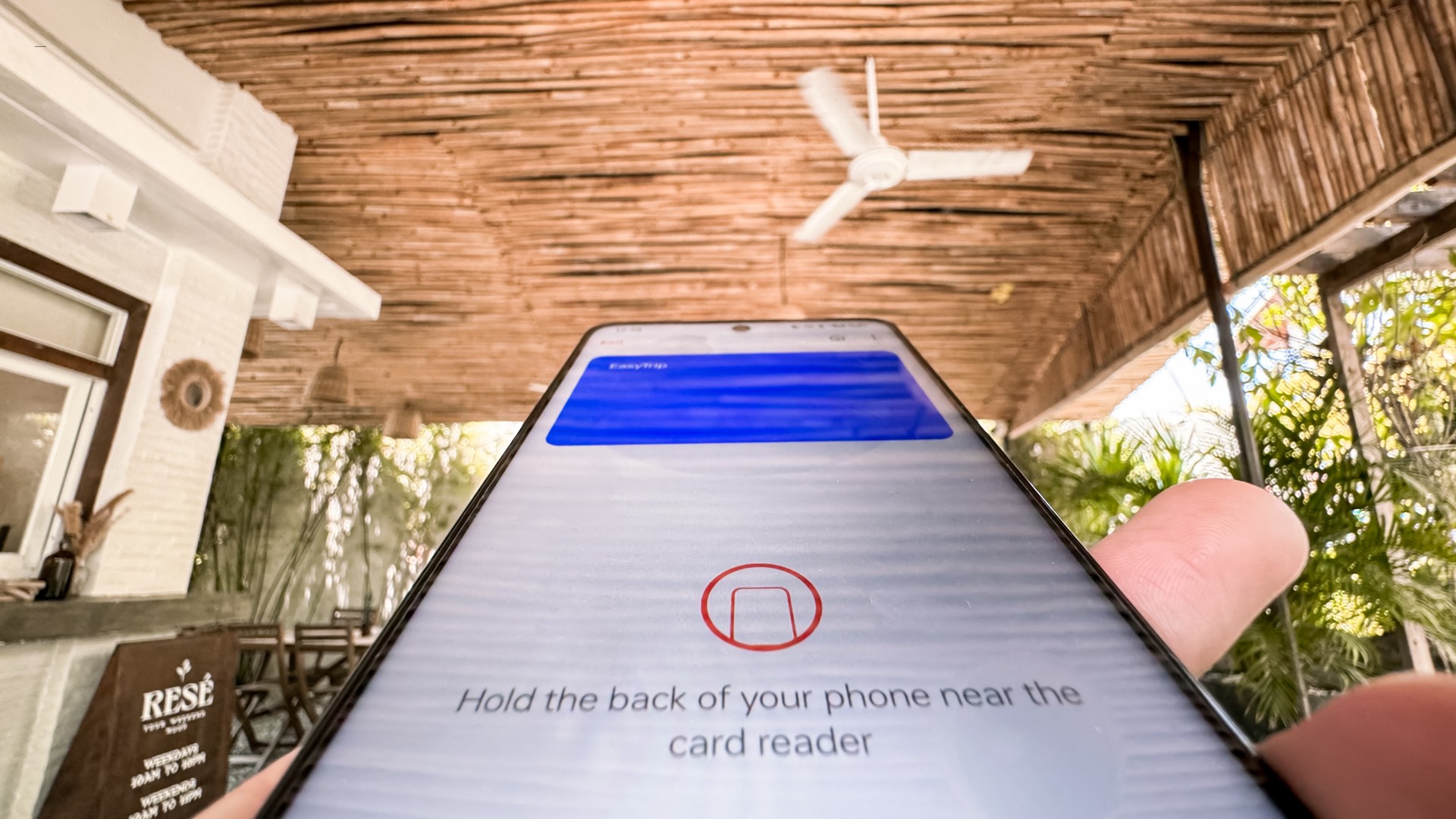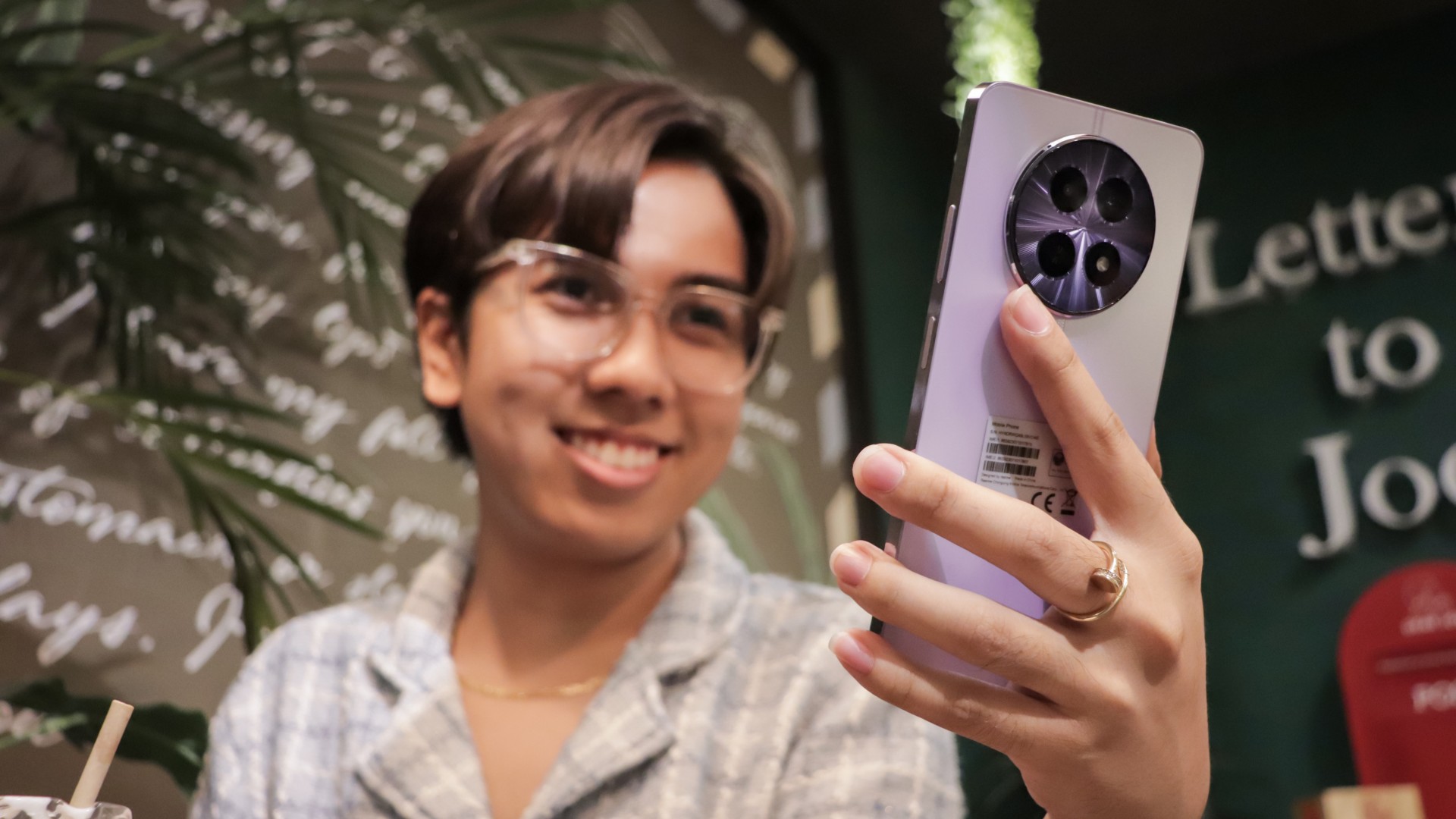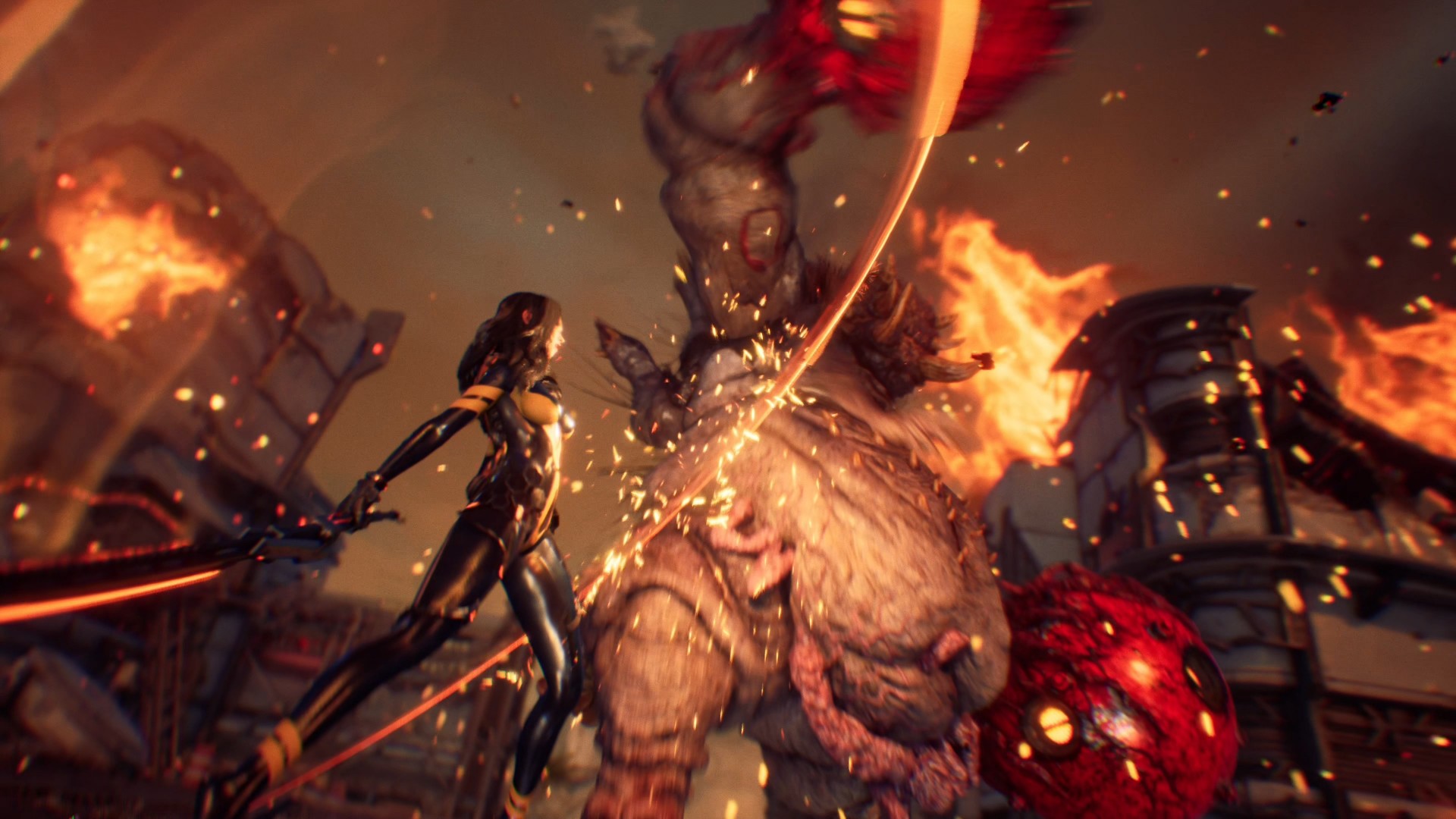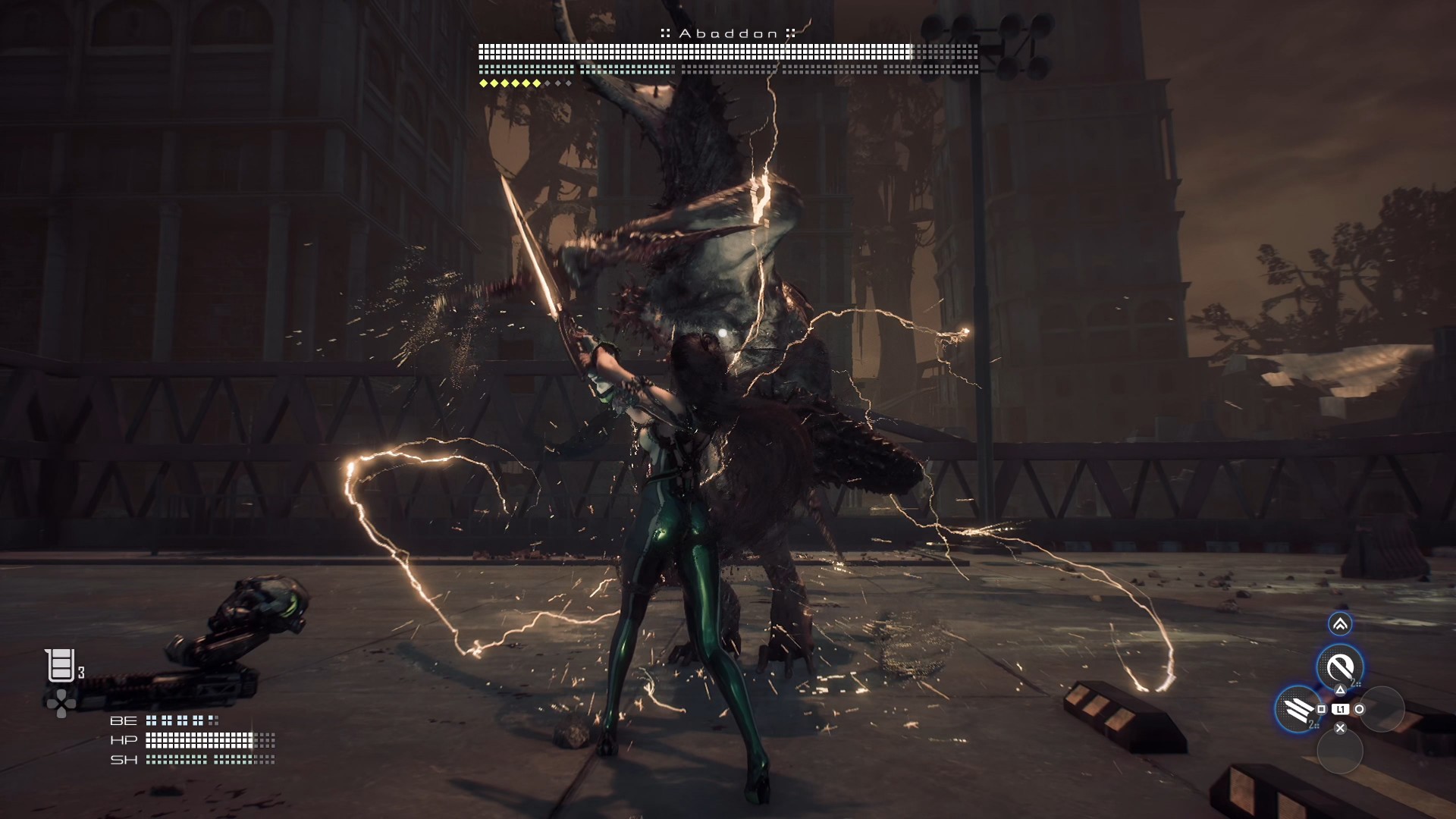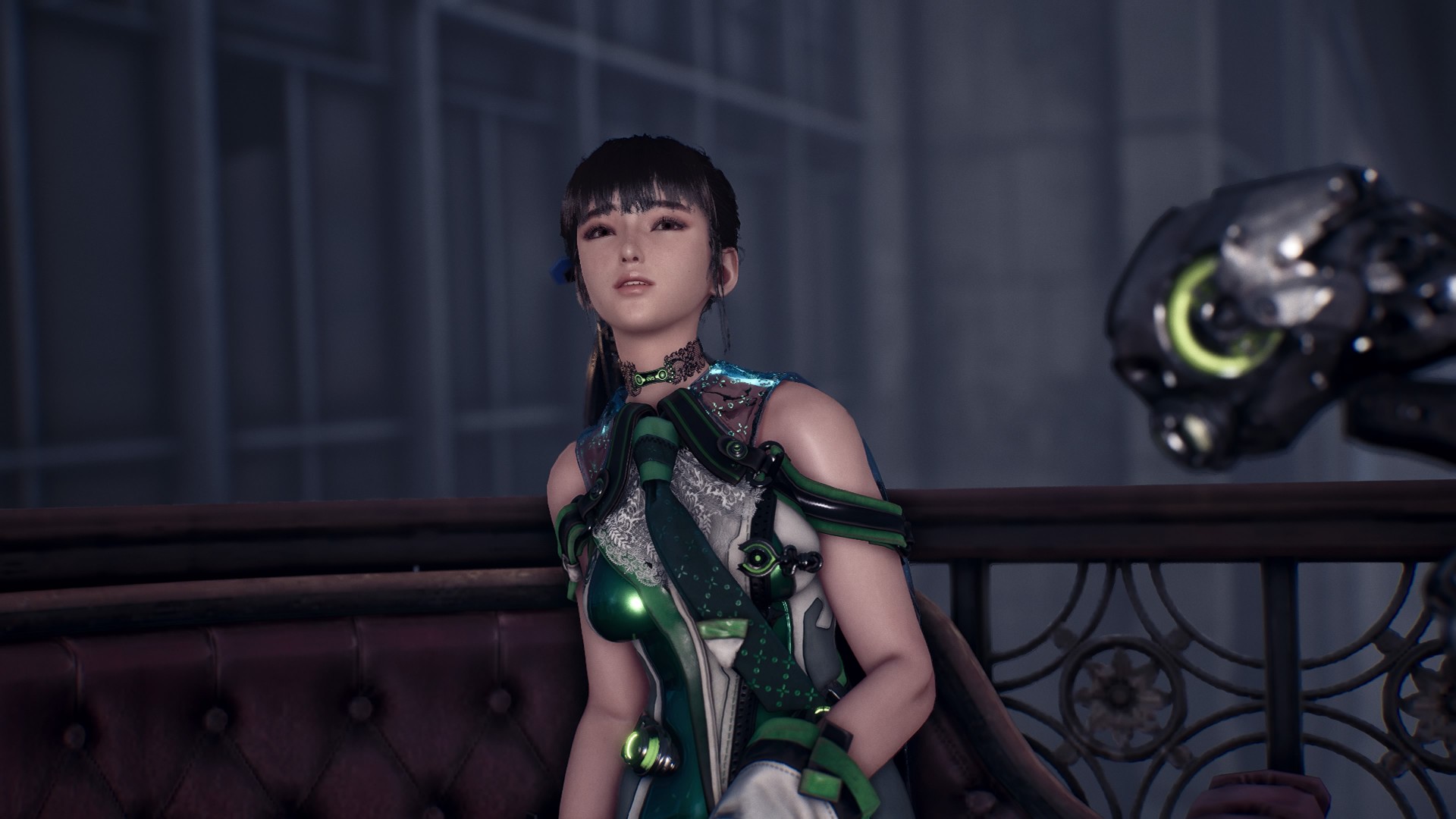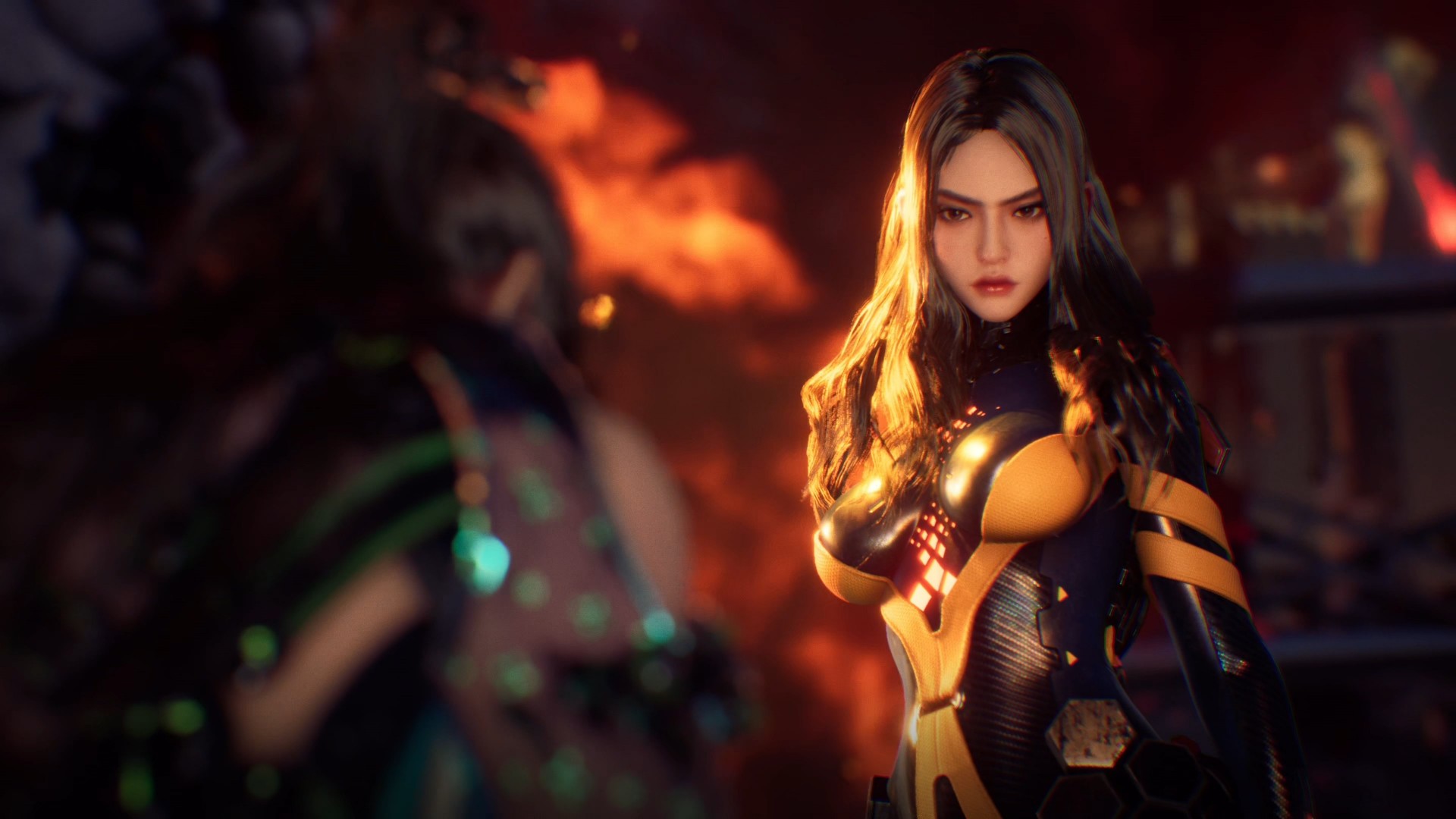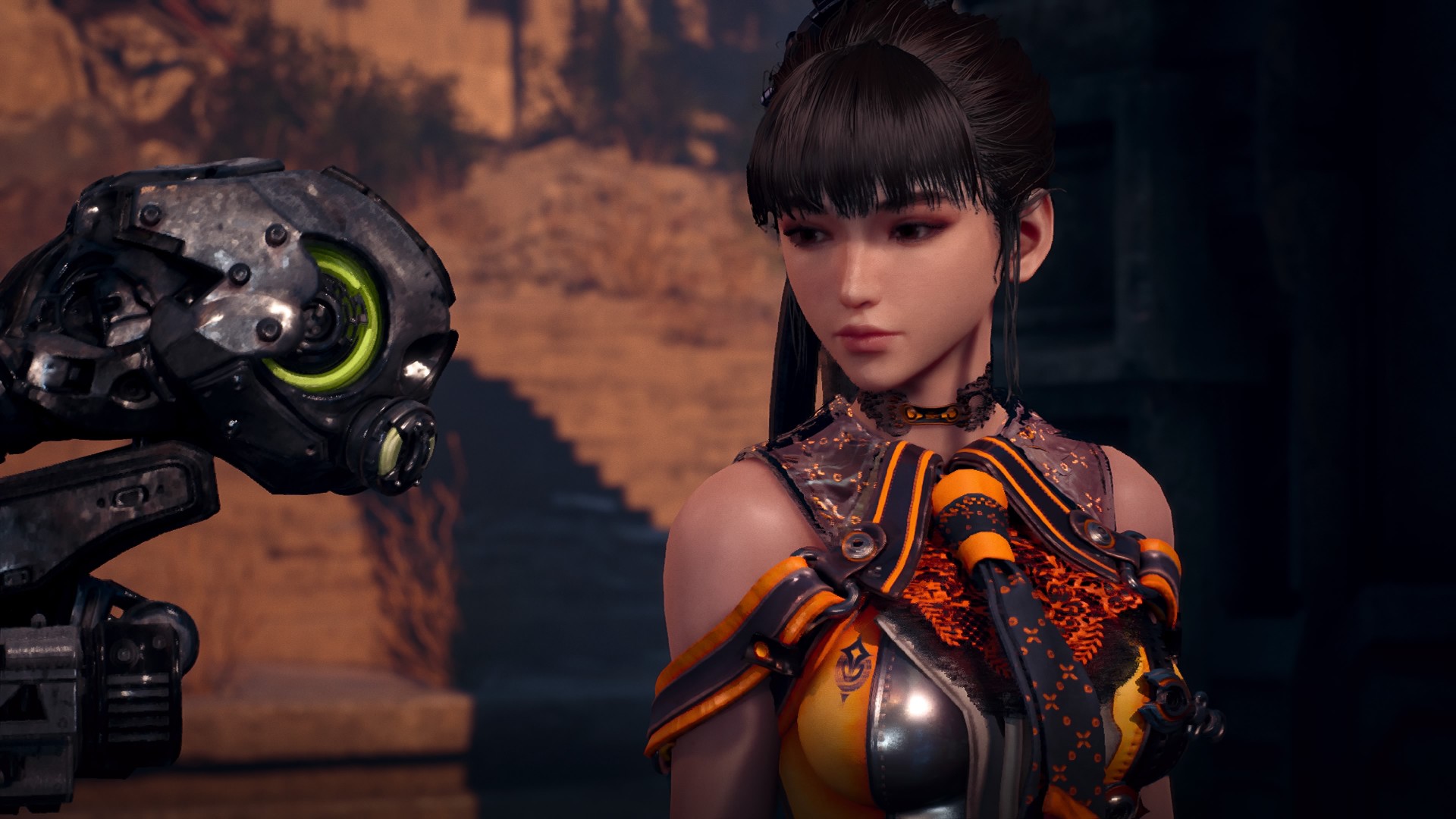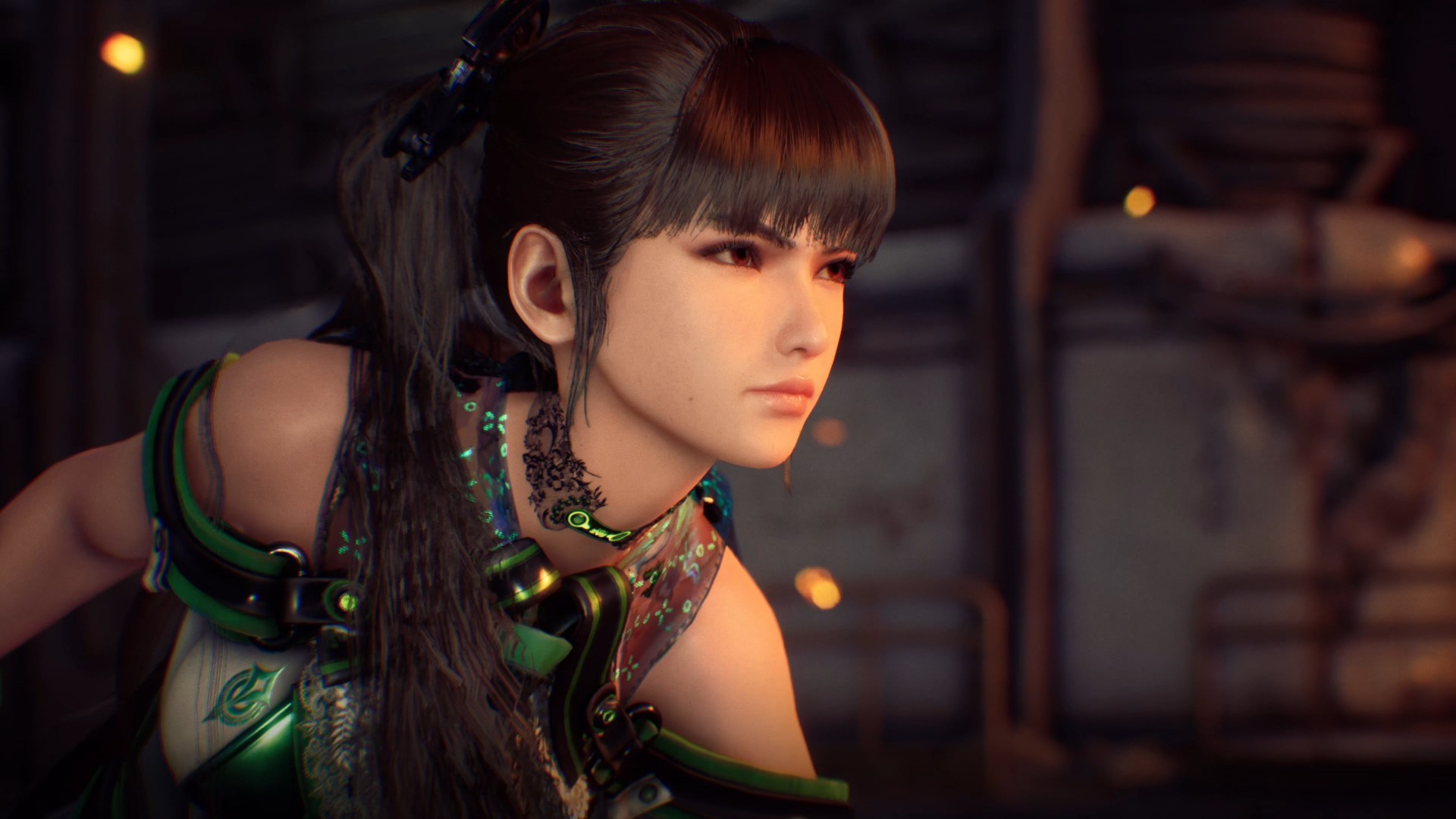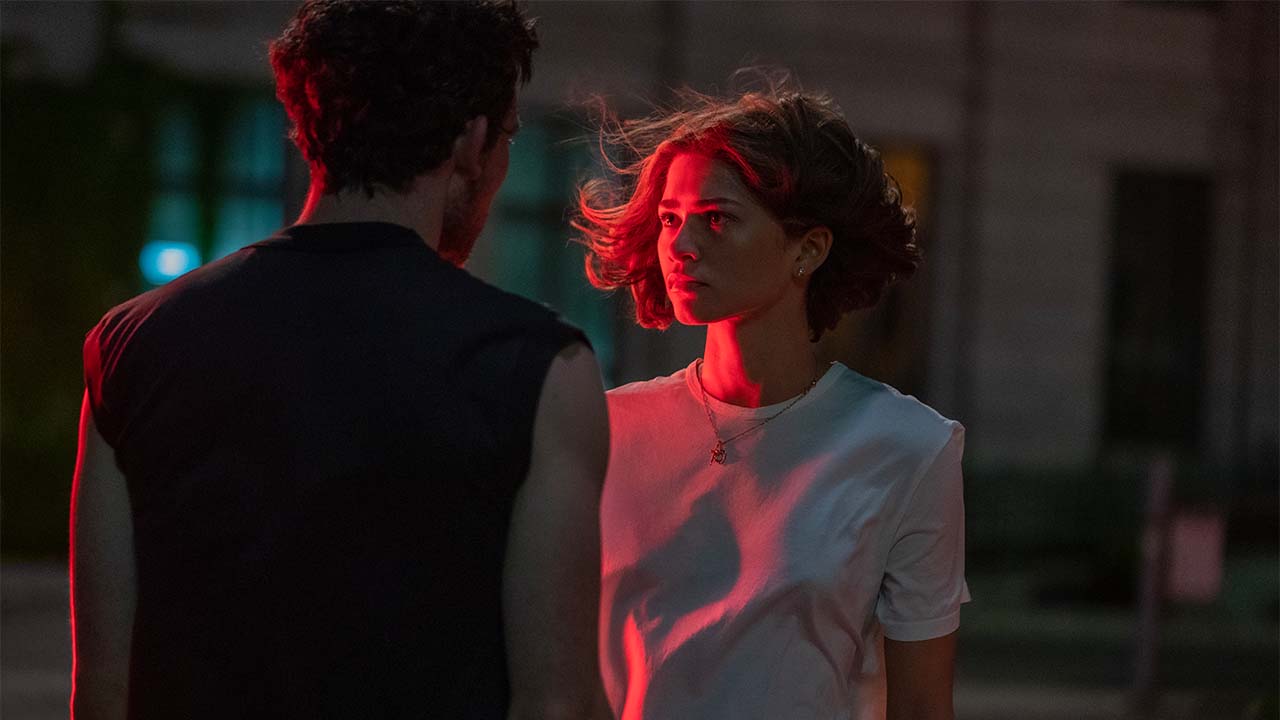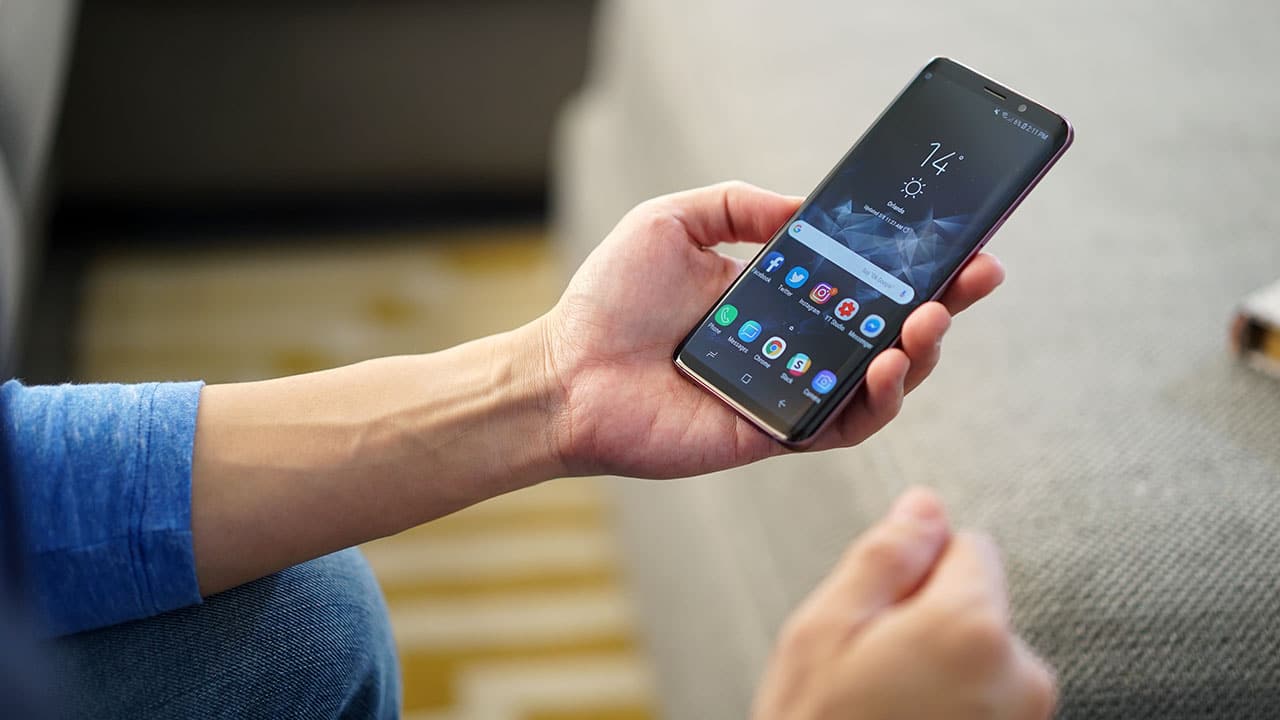
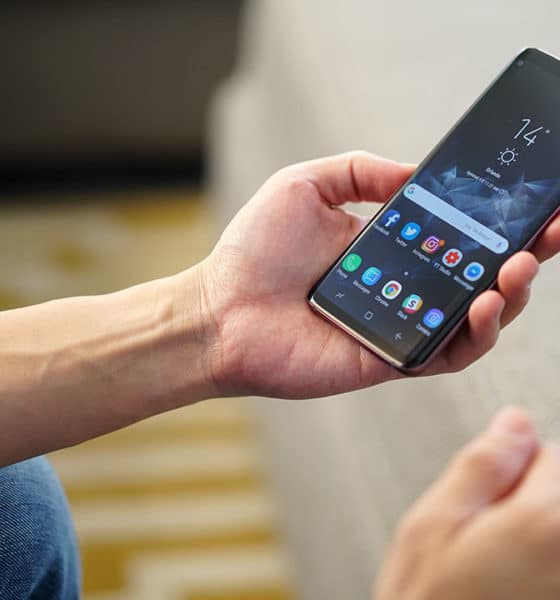
For any creator serious about his craft, the end goal is the same — to create the best version of a product possible. You achieve this through innovation and experimentation, in rinse and repeat cycles until something great is created.
But then what happens next?
It’s a predicament shared by many of the best technology brands in the biz, and one that Samsung finds itself in this year. Its new Galaxy S9 smartphone, while better on the inside, is the same on the outside. And while that is only part of the story told, it is the narrative by which many a reviewer will tell the story of Samsung’s new flagship.
Depending on who’s looking, the Galaxy S9’s recycled design can be seen any of two ways: either that it lacks the freshness that phones are so often measured by each year, or that Samsung has achieved the pinnacle of smartphone design and that the best way forward is to keep things as is.
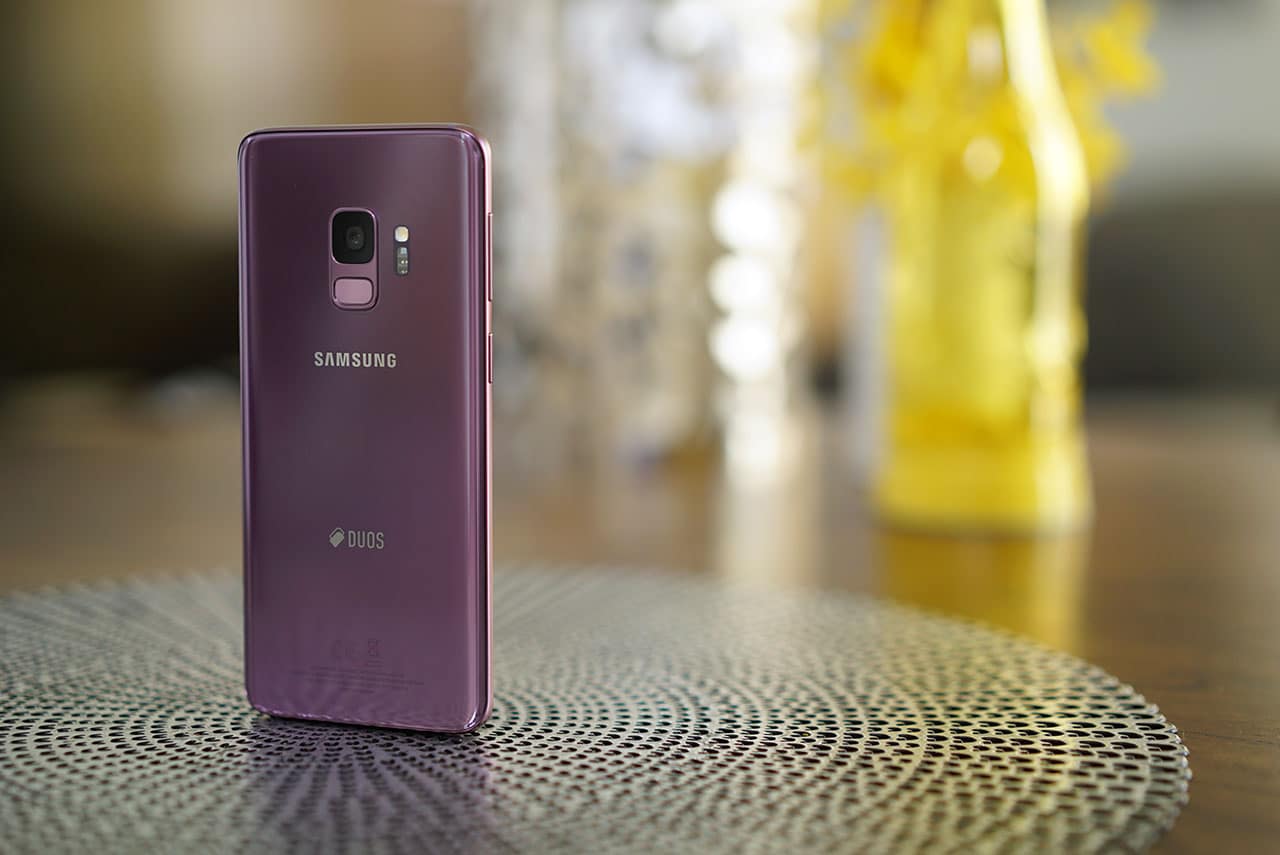
The Galaxy S9 shimmers in Lilac Purple / Photo by Michael Josh
I agree more with the latter, at least when it comes to looks. Two years in and the S9 is still the most beautiful smartphone on the planet. Its curved Infinity Display and all-glass build are hard to match. And now with colors ranging from coral blue to lilac purple, it’s hard not to fall in love with one at first sight.
But are looks enough? Does the Samsung Galaxy S9 have enough new features to back up its good looks? Is it the best Android smartphone ever made? And should you go out and buy it?
But first, more answers to your most important S9-related questions.
Is dual aperture a gimmick?
Samsung claims it’s reimagined the smartphone camera on the S9. While that might be more marketing than fact, it’s dual aperture camera is an unprecedented engineering feat.
No Android smartphone thus far has had the ability to change the aperture on a single lens. On the S9, you can switch between f/1.5 and f/2.4. But why would you want that?
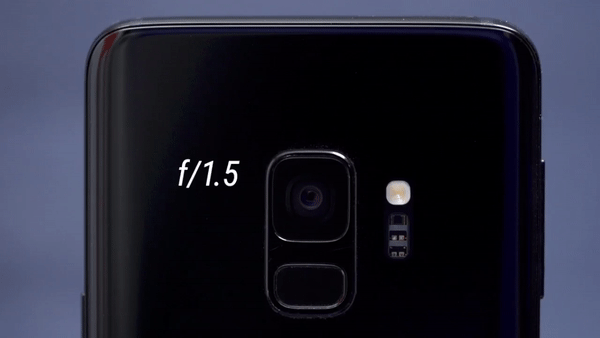
The Galaxy S9 has a unique variable aperture camera
A large aperture gives your photos that creamy background blur when shooting up close, but more importantly helps you take brighter, better photos in low light.
The S9’s f/1.5 is the highest aperture we’ve seen on a smartphone and significantly improves night shots. In fact photos we took at night using the S9 looked brighter than what the scene actually looked like in real life.
Why then would you need to switch to f/2.4?
The higher aperture, the bigger the depth of field. Sometimes details get too soft especially around subjects and sometimes you just want more details in focus; that’s where the smaller f/2.4 comes in.
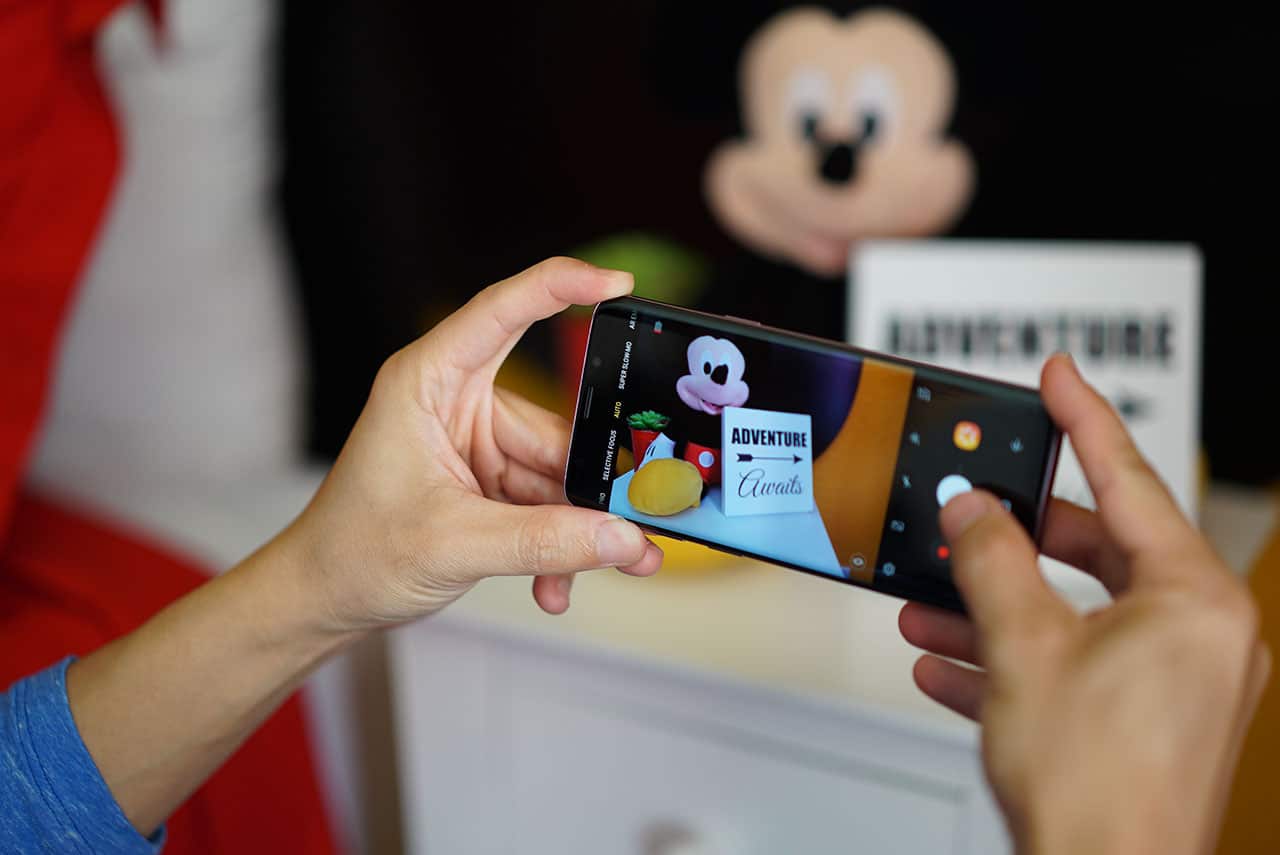
The Galaxy S9 picks the best aperture depending on how much available light / Photo by Michael Josh
To be honest, the average user should not have to worry about any of this, and Samsung doesn’t think so either, so it’s making these adjustments in the background. With the goal being, you getting better photos regardless of the shooting situation.
For more advanced users wanting more control, there is Pro Mode that lets you manually switch between the two among a host of other camera settings.
Does the Galaxy S9 take better photos versus X?
DxOMark, an independent body that rates cameras, recently gave the S9+ its highest overall score and highest photo score. While the results of its test are debatable, it’s oftentimes a good benchmark to see how a smartphone fares in the camera space.
We will need more time to conduct an in-depth head-to-head test of our own, but based on some preliminary comparison photos versus the Pixel 2 and against the iPhone X shot during the day, deciding on which smartphone takes the best photos will boil down to a matter of taste or how technically meticulous you are.
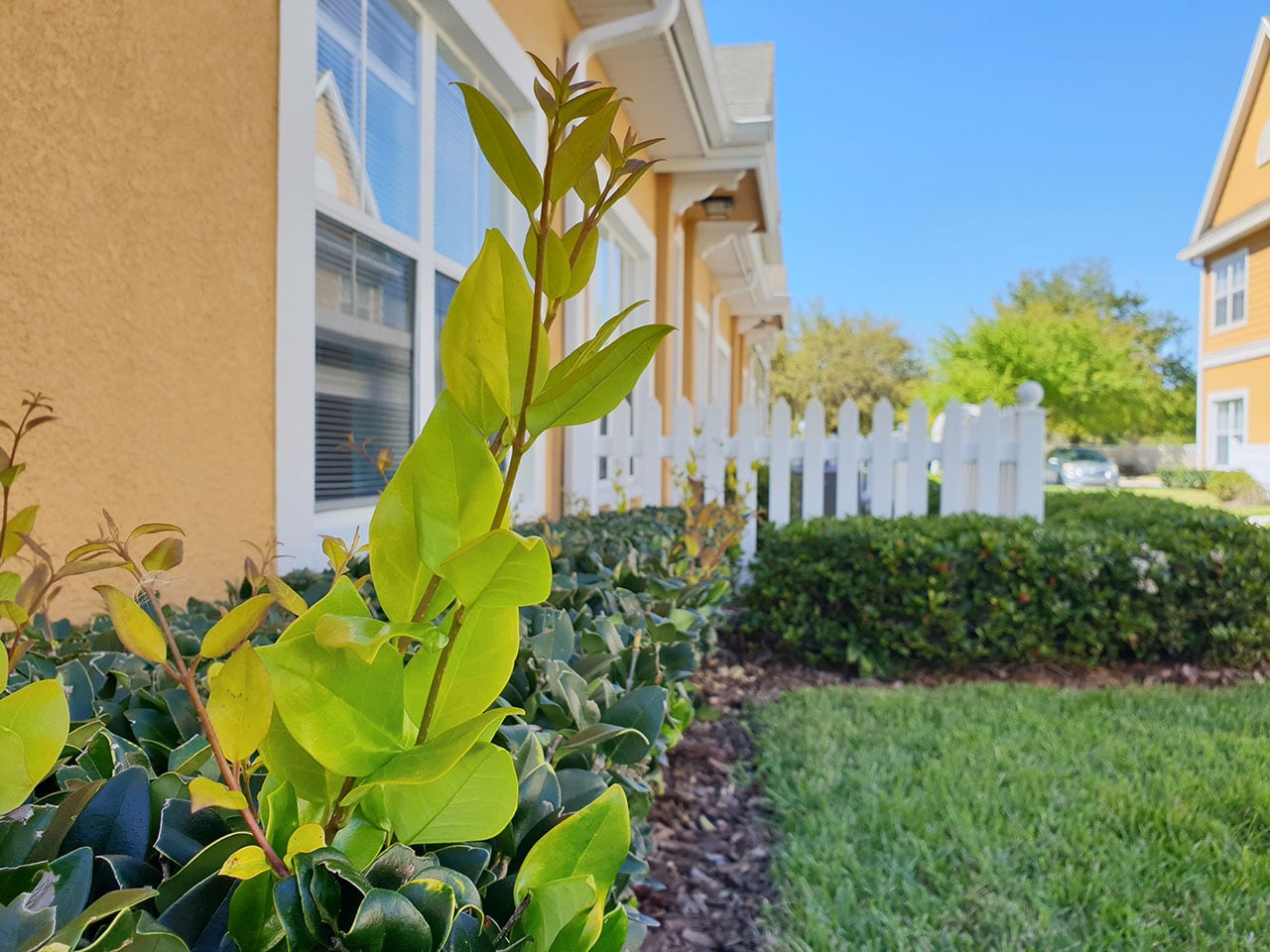
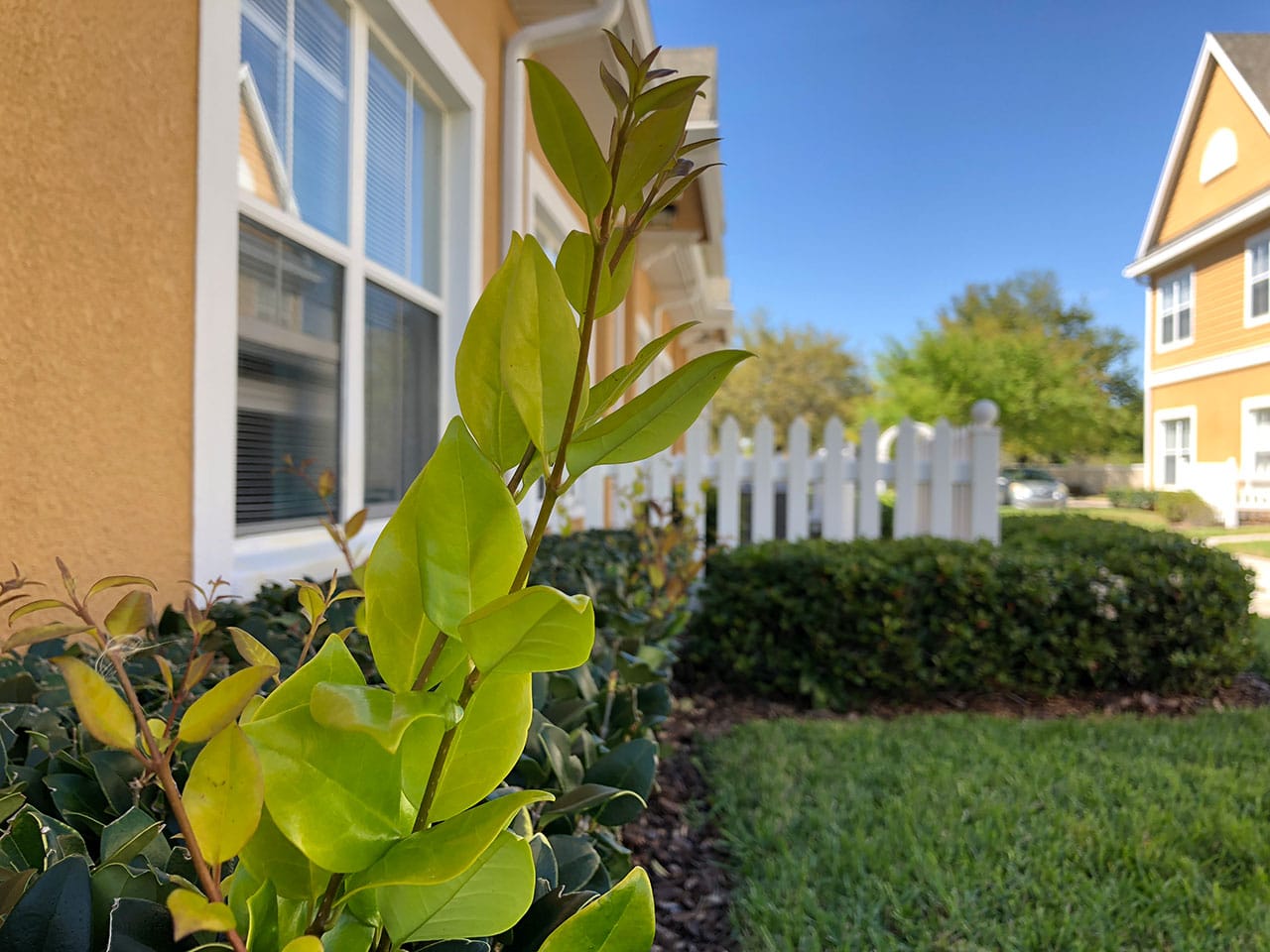
It’s in low light, however, that the Galaxy S9 shines, it is hands down the best low-light camera smartphone you can buy today.
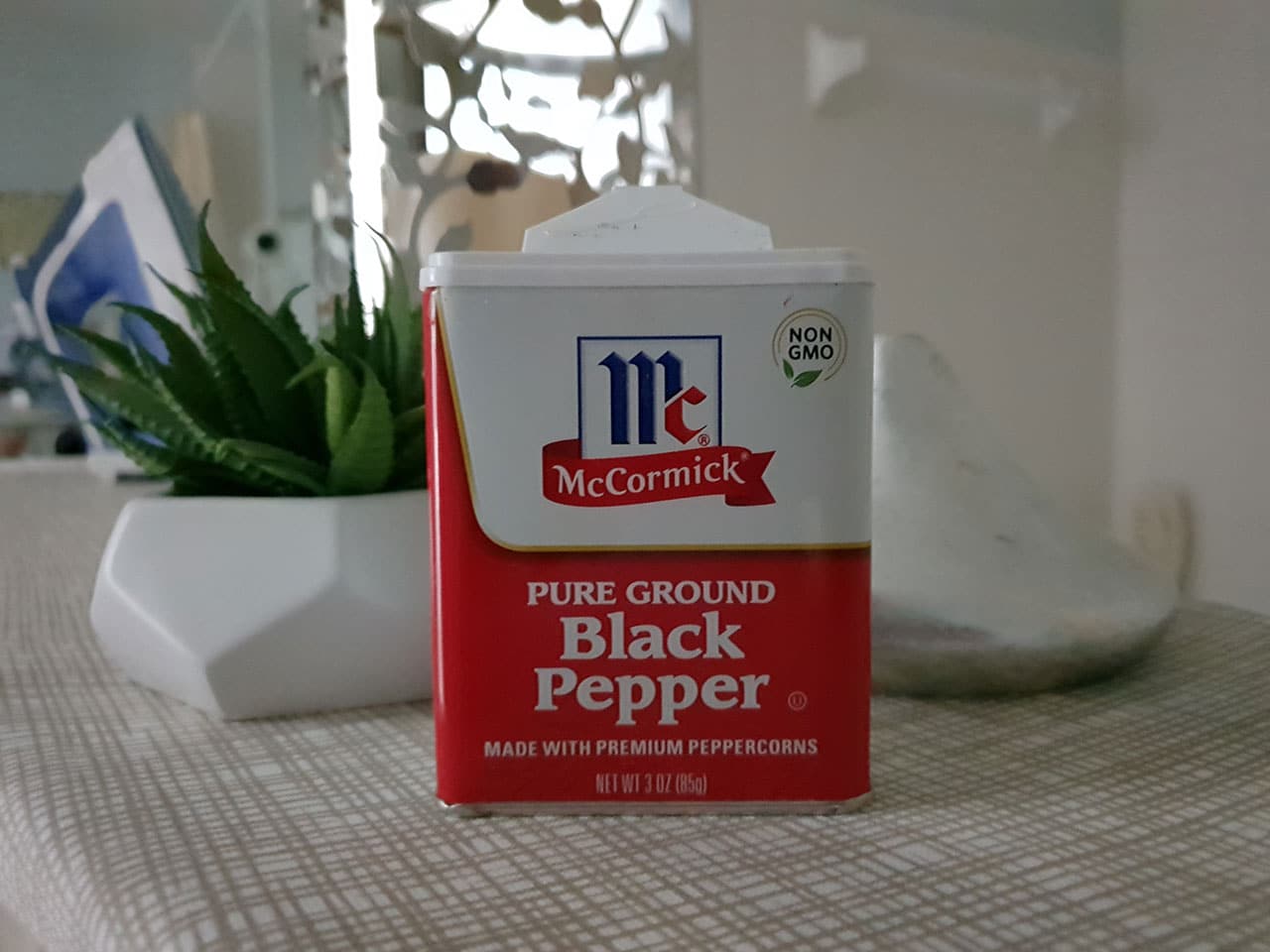
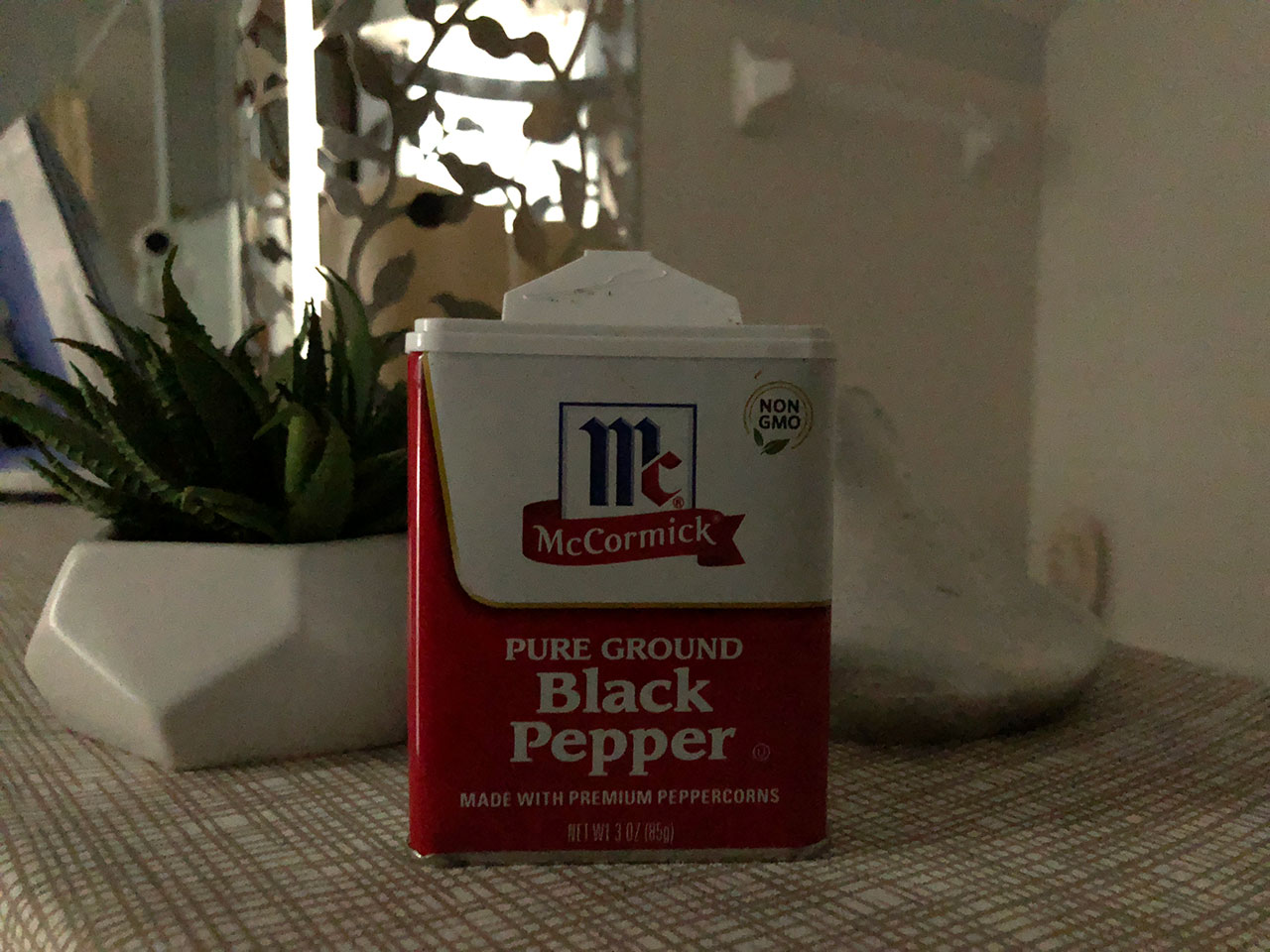
Should I get the S9+ for the second camera?
The S9 comes in two sizes: 5.8 and 6.2 inches — the S9 and S9+ respectively.
If you get the bigger S9+, you not only get more memory (6GB vs 4GB), a bigger battery (3500mAh vs 3000mAh), and a larger screen. You also get two rear cameras.
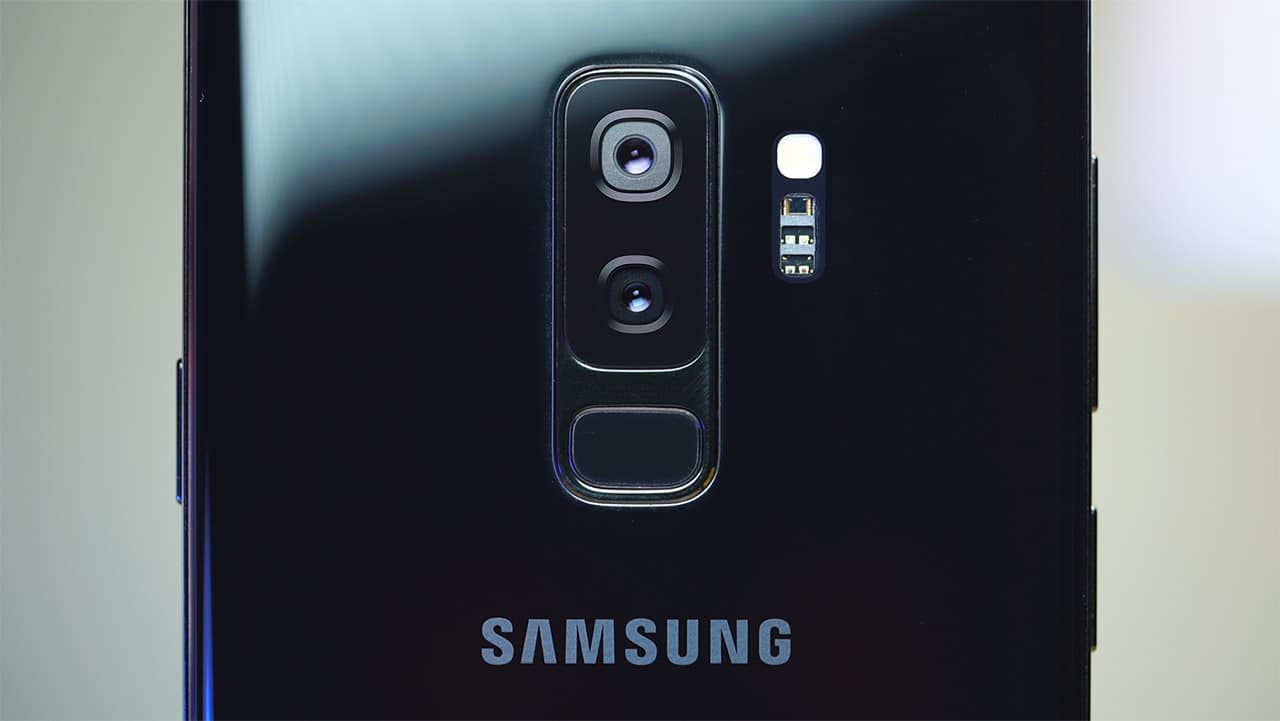
The Galaxy S9+ has two rear cameras / Photo by Chay Lazaro
This second camera is a 2x zoom lens, a great thing to have if you like getting in closer on subjects without sacrificing the quality of your photos.
The second camera also enables a feature called Live Focus which we’ve also seen on the Note 8 and the A8 (2018) series. It’s a must-have feature on any top-of-the-line smartphone, giving your portraits a nice blurred background. Unique to Samsung’s implementation is the ability to adjust the amount of blur while taking the photo and after, and if you decide you like the non-portrait, wide-angle version better, the S9 also keeps a copy for you.
These two features justify the US$ 120 premium of the S9+. If you’re torn between the two, it is the model I recommend.

Selective Focus on the S9 isn’t very reliable
It’s worth pointing out that on the S9, you can still blur out backgrounds using a software feature called Selective Focus, but it’s just not as good at cutting out subjects from their background.

Art Bokeh on the Galaxy S9+ / Photo by Joshua Vergara
Speaking of, if you’re really serious about background blur, Samsung added a new feature on the S9+ called Art Bokeh. If the conditions are right, when you go in and adjust Background Blur on a Live Focus image, you’ll get a bunch of shape options to choose from. You can get bokeh in the shape of stars or hearts as shown in the image above.
Super slow-mo 960fps, so what?
To better appreciate the next two features, you have to understand Samsung’s target demographic, a generation of creators who have an affinity for sharing and expression.
If you like creating shareable videos, GIFs, and Boomerangs, you might like Samsung new super slow-mo feature. On the S9, you are able to slow down time more than ever before on a Galaxy smartphone.
To capture the best super slow-mos, you need plenty of light. The sample below was shot inside a controlled environment with plenty of available light.
We made a mess in the studio this week to test the #GalaxyS9PH‘s super slowmo. This is the result. #TheCameraReimagined pic.twitter.com/Y9N0qxL2Jz
— Chay Lazaro (@chaylazaro) March 9, 2018
The Sony Xperia XZ Premium was the first to get this feature, one whole year ago. Slow-mos shot on both phones are rather similar in terms of quality, with the S9’s slow-mos a tad bit warmer.
On the S9 though, it’s easier to operate. Auto Mode detects motion and starts capturing once it senses movement. This way you get the shot each time.
But Auto Mode works best when you can control what you’re shooting. Out in the real world, you’re best using manual capture; you’ll need plenty of practice to get your timing right.
Finally, when you shoot super slow-mo video, the S9 adds background music automatically so you can instantly share your creations to Facebook or Instagram. You can go in and edit the track or just remove it entirely.
Not Animojis
When the iPhone X launched last year, one of its more quirky features was Animojis, basically the ability to animate nine popular emoji using the phone’s face tracking features.
The iPhone X has True Depth sensors that can match muscle movements on your face so your Animoji basically does as you do. Samsung hoped to do one better on the S9 with a similar feature called AR Emoji. Unfortunately, we didn’t enjoy it as much.
While we like the ability to personalize and create characters after our own likeness, we feel more often than not, AR Emoji characters don’t look like the selfies they are based on.
But more bothersome is the fact that AR Emoji don’t track as well. They especially struggle when trying to match speech. So nope, AR Emoji Karaoke is out of the question.

Send animated stickers featuring your own emoji
We do like the personalized animated stickers, though. They are cool, and we like how you can use them across any or all of your favorite chat apps. They are accessible by pressing the sticker icon on your default Samsung keyboard, and are also saved as GIFs in your Gallery app.
Stereo speakers
Audio has just gotten better on the S9.
If you’re like me and watch a lot of videos or play games without headphones, you’ll like the new stereo speaker setup on the S9. Sound comes out of the earpiece up front, and the speaker grilles on the phone’s bottom. The sound is louder and more pronounced.
The S9 also now supports Dolby Atmos, so you get surround sound-like audio when listening to content that supports it. Last year, Netflix announced support for Atmos with titles like Okja and Snowpiercer, but it doesn’t quite seem to work on the S9 yet.
Hello Bixby
Like Apple and Google, Samsung has its own personal assistant, Bixby.
And to show you its committed to Bixby, the S9 retains the S8’s dedicated Bixby button. If it’s not your cup of tea, you can deactivate the button completely, but you cannot remap it as a shortcut to other apps or commands. That would have been a killer feature.
Samsung promises Bixby 2.0 will come next August or September when it unveils the Note 9. For now, it remains underdeveloped.

Bixby Vision can estimate how many calories are in the meal you’re about to have
Sure, Bixby can do new things, like live translation when ordering food overseas. And when your meal arrives, you can also have Bixby give you an estimate of how many calories you’re about to consume. Cool tricks, but they do not replace a good old personal assistant.
In the interim, I suggest you use Google Assistant; it’s accessible via the usual voice command, “Okay Google.”
Improved biometrics
One way to recognize the S9 from an S8 is to turn the phone around and look at the position of its fingerprint sensor. Proving that it listens to user feedback, Samsung has graciously located it to underneath the camera instead of beside it.
It’s in a much better place, but unfortunately it’s still too close to the camera, and part of one single unit, instead of being separate. In my week or so of use, I’ve often brushed my S9 camera’s lens while trying to unlock my phone.
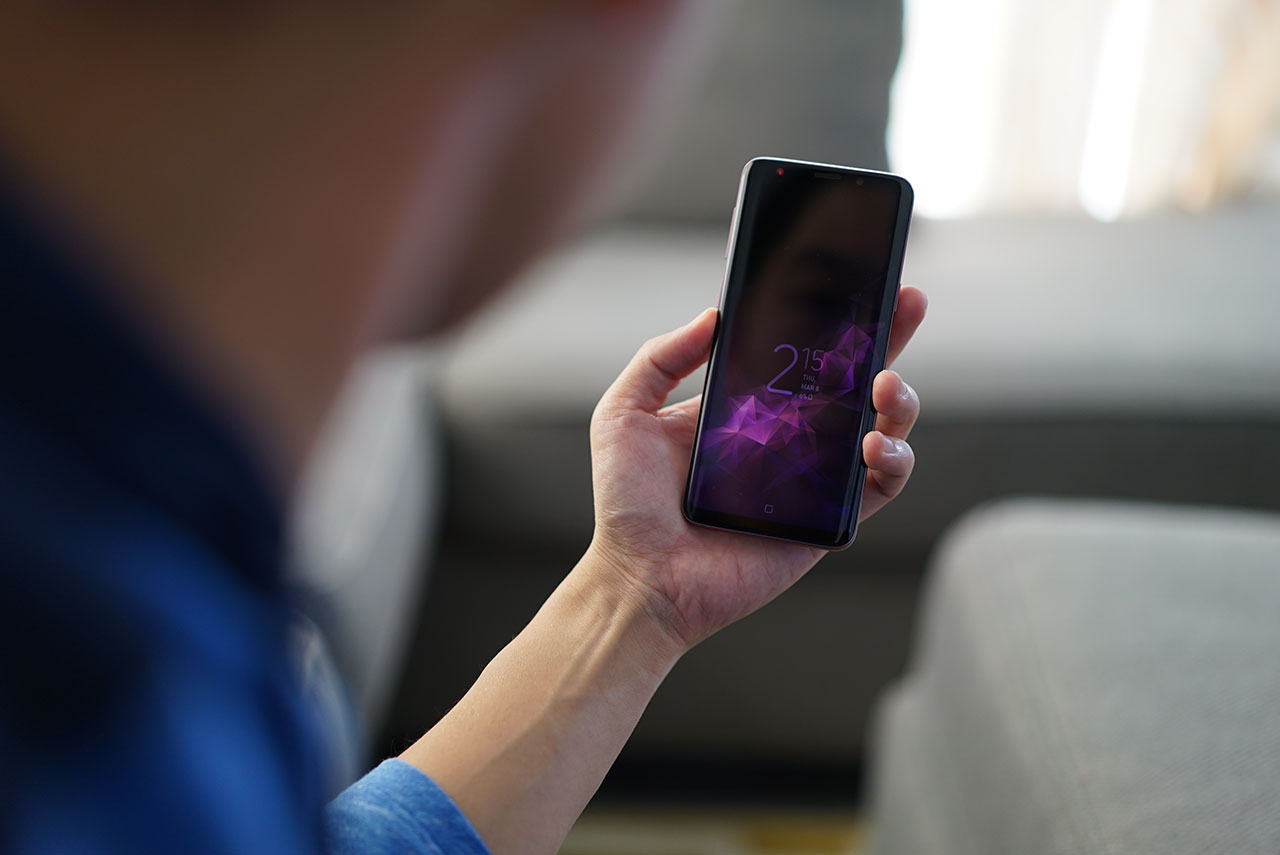
Intelligent Scan on the Galaxy S9 combines facial recognition and iris scanning / Photo by Michael Josh
It’s kinda a big deal for me as the fingerprint sensor is still my default way of unlocking the phone. It’s just quicker, snappier, and more reliable even if Samsung has beefed up its “Intelligent Scan” by integrating its facial recognition and iris scanner.
Price jump
A smartphone’s price tag is as important as any new feature. And when it comes to determining the S9’s value, it’s important to take a look at how much the S9 costs around the globe.
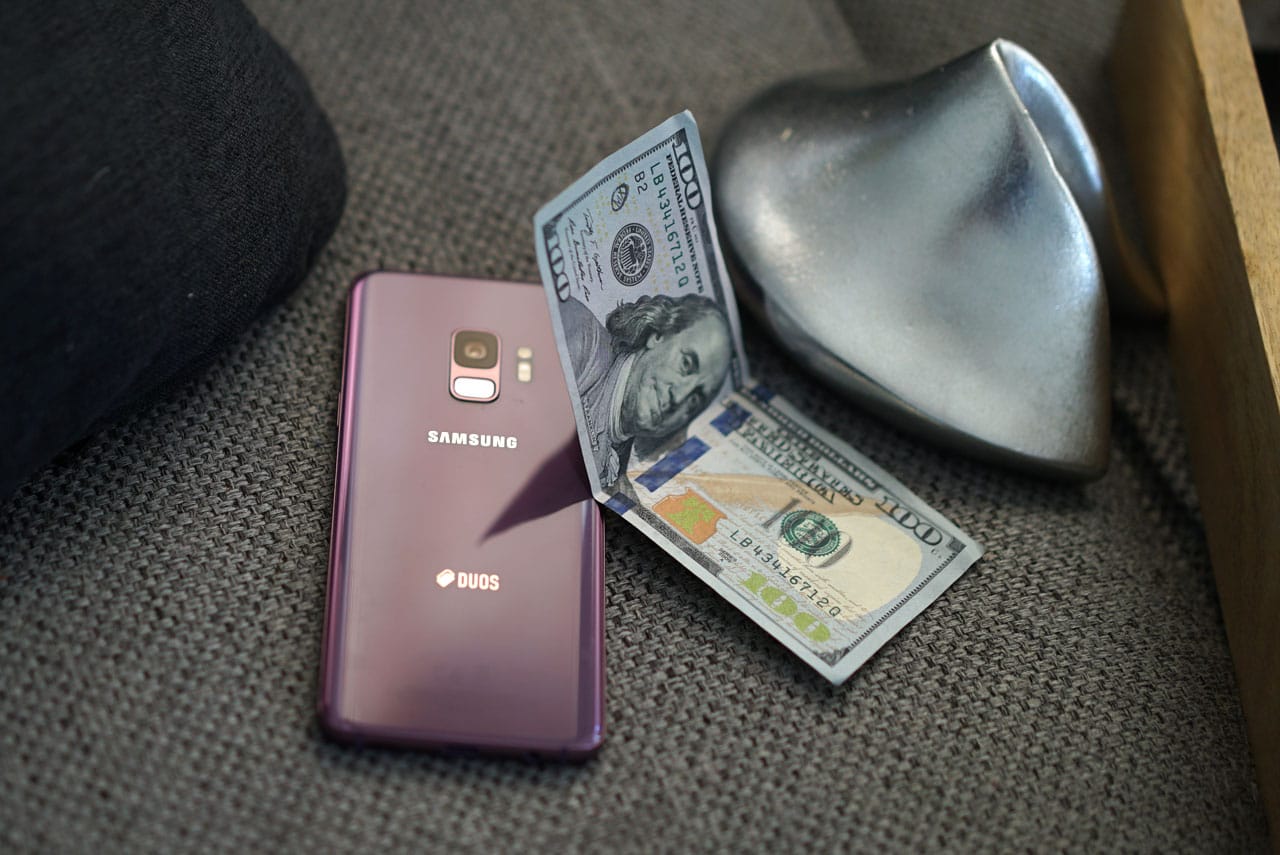
Prices of the S9 went up everywhere except the US / Photo by Michael Josh
Here’s the thing: In the US, the S9 and S9+ cost as much as the S8 and the S8+ when they launched. But across the globe, prices increased by 5 to 15 percent.
Do all these features justify the price increase? No.
But having said that, when compared to the iPhone X, the S9+ is still more affordable, so there’s that. Depending on where you are in the world, the S9 and S9+ might not be the best value for money phone. But they are at least pretty competitive in the upper end of the price spectrum.
Is the Galaxy S9 your GadgetMatch?
If you’re looking for the best Android smartphones available today, the S9 and S9+ are a match. The S9+ especially is one the best Android phones in the market today.
Both models are deserving of the GadgetMatch Seal of Approval.
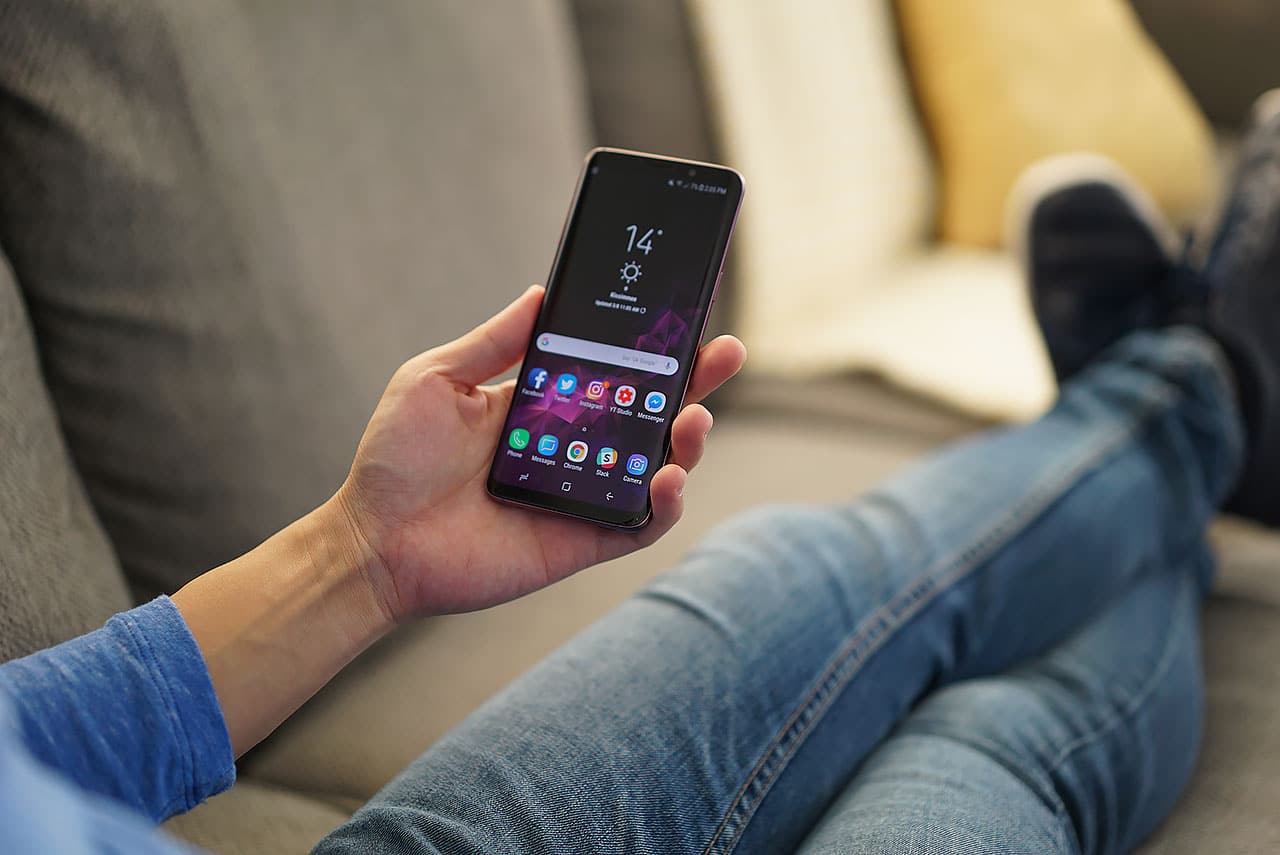
The Galaxy S9 is a pleasure to use / Photo by Michael Josh
Apart from an excellent camera and great looks, you’ll like the S9’s creator-focused features, loud stereo speakers, water resistance, and headphone jack. On the flip side, Bixby is still not ready, AR Emoji is unpolished, and battery life could be better.
The S9 and S9+ are not intended for S8 and S8+ users. If you own an S8, skip this upgrade and wait for next year.
Although, S7 and S7 Edge users might want to strongly consider this upgrade, especially if their contract is up for renewal. US carriers in particular are offering plenty of perks for those pre-ordering the phone.
For the more price conscious though, also consider not-so-premium phones from brands that may not sound as sexy as Samsung or Apple but offer all of these high-end specs at a lower, more reachable price point.
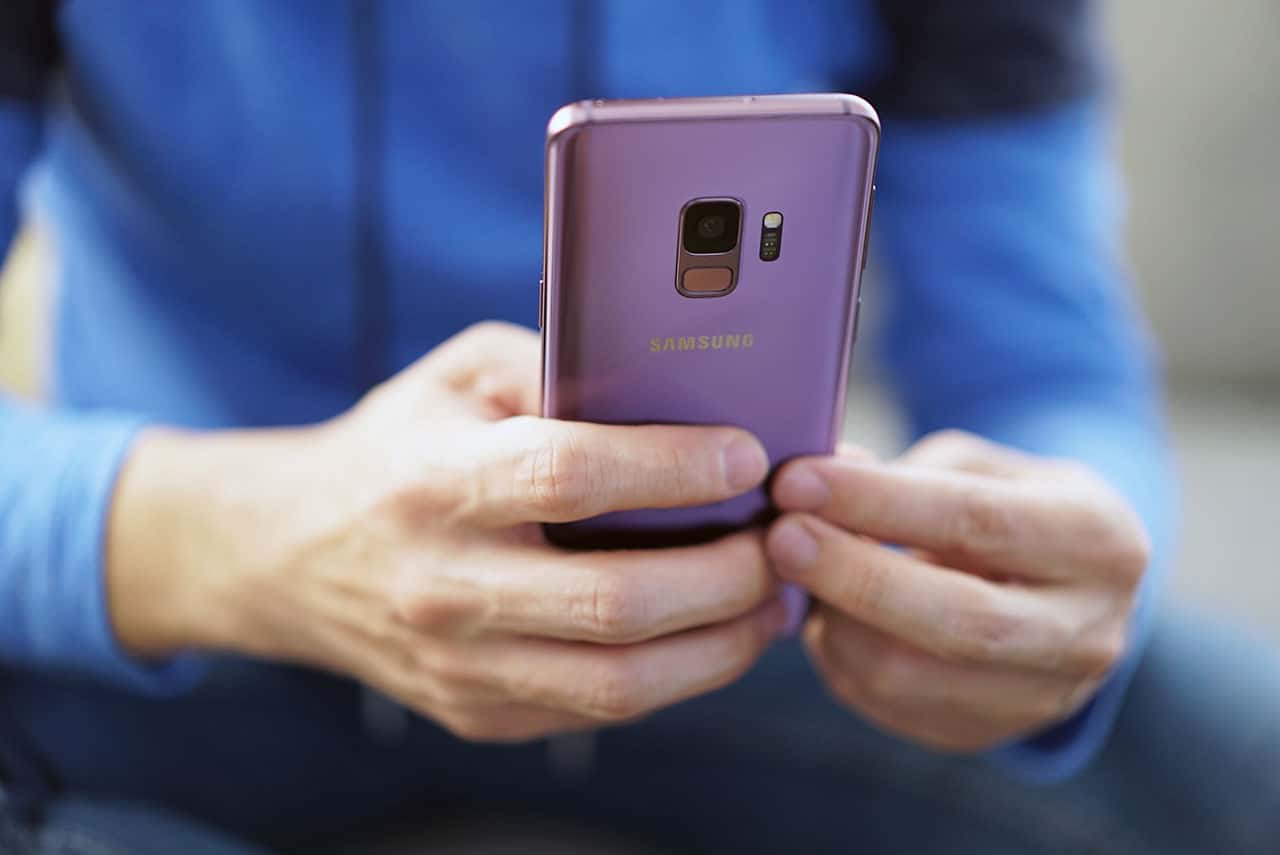
Following years of iteration, Samsung finally nailed it / Photo by Michael Josh
Following many years of iterating, Samsung seems to have nailed it. While in some ways the S9 is almost predictable, its purely iterative step-up also speaks to Samsung’s ability to make great phones. As a fan of innovation though, I want to see more, an under display fingerprint sensor maybe, better battery tech, and ways to leverage artificial intelligence to make their phones better. AI is the future, and it would be interesting to see glimpses of how Samsung plans to ensure their smartphone remains at the center of this computing revolution.

Reviews
realme 12 5G review: It was enchanting to meet you
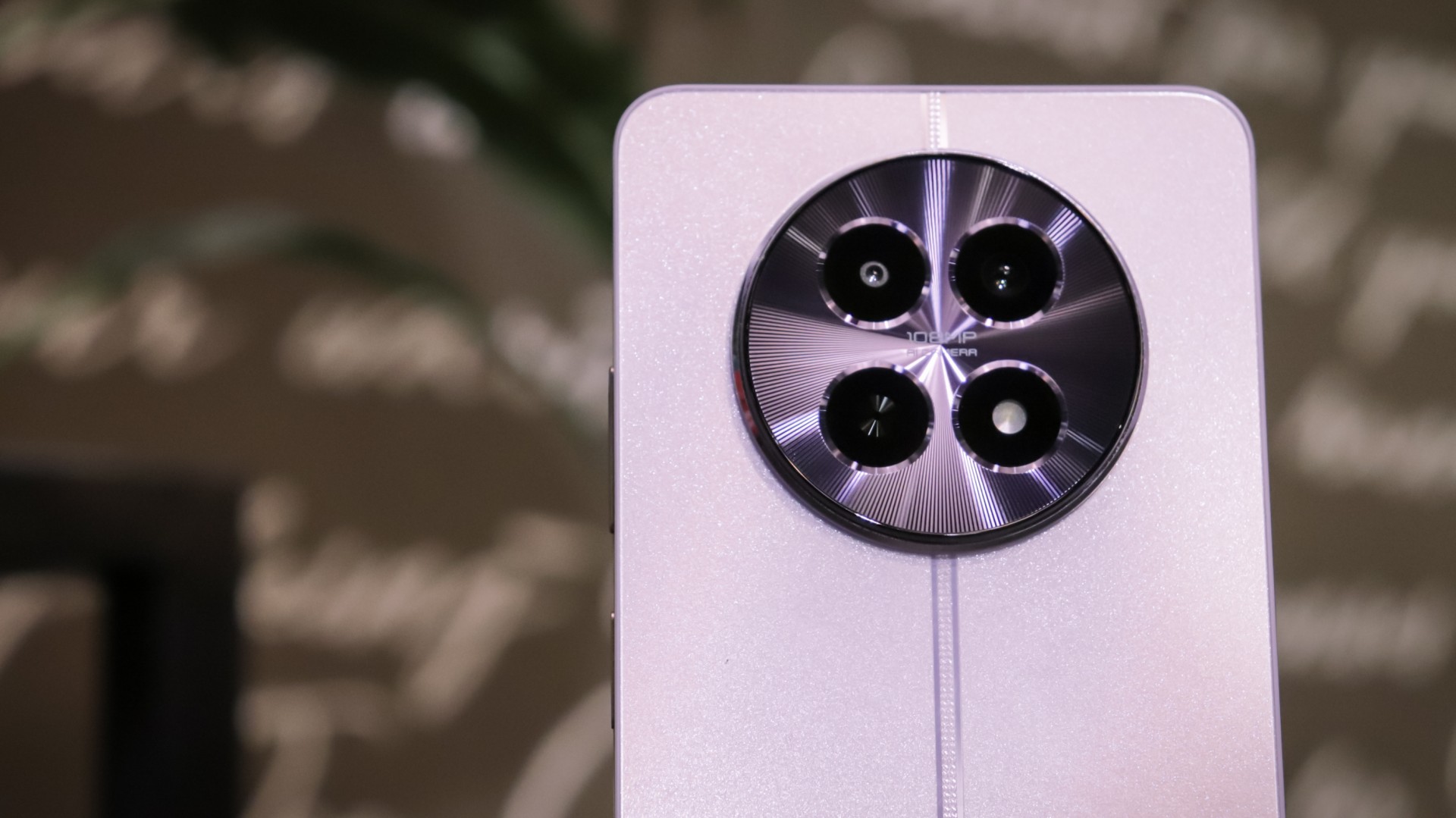
Just when we thought the Midnights’ era was over and the clock’s hands are now pointing to the tortured poets, a ‘Lavender Haze’ has arrived in the midrange smartphone department of the Philippines.
The realme 12 5G is here, and dang, does it look magical!
Just over a month after the official release of the realme 12 series, a new younger sibling just arrived, dead set on satisfying a niche that wants a competitive mobile device but has arguably smaller pockets.
You showed me colors you know I can’t see in anyone else
Right off the bat, the realme 12 5G is nothing short of stunning. The unit I have is in Twilight Purple, and believe me when I say that it’s a feast for the eyes. The other color variant of the phone is Woodland Green and its deep green hues will certainly win many hearts as well.
Despite not having the vegan leather of its older siblings, the realme 12 5G still has the ability to turn heads and serve the borahae aesthetic which a lot of people (count me in!) like.
The camera layout of the realme 12 5G is a visual language we’re familiar with all too well. The luxury watch design is something I will always be a fan of. I really admire smartphone brands that create their own visual identity rather than those who take the easy route of copying a certain bitten fruit brand.
However, I must say that the metal frame of the realme 12 5G is a certified fingerprint magnet. But if you’re like part of the, say, 99% of the population who use smartphone cases, the free clear case that comes straight out of the box is an easy fix. That’s another episode of android-smartphones’-generosity-saves-the-day!
It is also an important thing to note that while I really love the big camera design of the realme 12 5G, it can be bothersome when using the phone in landscape orientation. My fingers are naturally covering/touching the cameras. While it’s not that uncomfortable, you might have to wipe the lenses much more than you think you should.
The ports and buttons are pretty generic for the most part. The volume controls and power buttons are sitting on the right, the USB-C port, stereo speakers, and the 3.5mm headphone jack (yes, a headphone jack in 2024? I know, right!) are on the bottom. realme, however, stepped up the game through the power button because it does not only double as a fingerprint scanner, it also allows custom shortcuts by double-tapping or double-pressing. This feature is called the dynamic button.
A display made for ‘Islang Pantropiko’ (Tropical Island)
Rocking a 6.72 FHD+ LTPS LCD display that supports a screen refresh rate of up to 120Hz is another impressive feature the realme 12 5G boasts under its purple sleeves. With a screen-to-body ratio of 91.4% and a camera punch hole that effortlessly blends with the display, an immersive experience is guaranteed.
The image looks sharp, the colors are vivid, and scrolling on this device is a breeze. Although, I would have loved it more if the bezels are thinner or at least, proportionally distributed but again, that’s just me being a true-blooded Virgo.
But that’s not where the display admiration ends. The realme 12 5G also supports up to 800 nits of screen brightness. It can go further to 950 nits when the ‘Extra Brightness’ mode found on the display settings is toggled on.
This makes the display easily viewable even outdoors. That’s especially true during these ‘Islang Pantropiko’ summer weather when the sun’s scorching heat is not that forgiving to smartphones with dim displays.
The cameras: Do I love it? Do I hate it? I guess it’s up and down!
I would like to be very honest, I initially wanted to name this portion of the review as “The tortured camera department” but I feel like that would not be accurate of what I really feel towards the shooters of the realme 12 5G.
The smartphone sports three cameras in total. At the back lies the 108MP main camera that supports 3X zoom and a 2MP portrait camera. Meanwhile, the 8MP AI selfie camera resides on the front panel.
The quality of the photos produced by the realme 12 5G is a hit or miss for me. There are times when I really feel like it’s doing a great job but there are also times when I just feel like it could have done so much better. Take a look at these sample photos.
Photos taken in broad daylight look pretty good. The colors are vivid and the sharpness is on point. The only thing I can complain about is the dynamic range which, on some conditions, can look underwhelming or too processed for my liking.
Despite the not so accurate edge detection, portrait shots of the realme 12 5G can produce decent outputs. However, I highly suggest using the 1X option rather than the 3X one for a natural looking and overall better quality.

The High Res mode dedicated to capture 108MP photos doesn’t really pose that much of a difference. Sure, the photos may appear a tad but brighter but when looking closely, the highlights are overexposed.
Not just that, photos taken using the High Res mode generate massive files. I even took a single photo that is over 90MB in size.
The 3X zoom seems underperforming and inconsistent as well. The photos can look good and usable one time but frequently, it just appears oversharpened and heavily processed. The colors can be too saturated as well.
Low light photos taken using the realme 12 5G is also another yin and yang for me. When there is enough light, it can produce really impressive results but it can also struggle during the darker times when you feel like you really need it to perform as intended.
As for the selfies, I can say that I am quite happy with the phone’s performance. It may not be flagship level but it won’t let you down in your “me” moments.
The video is limited to 1080p at 30FPS for both the rear and front-facing cameras. I do believe that there’s some sort of EIS for the rear camera but the quality is nowhere near amazing.
So long, realme
One thing I really love about the midrange Android market is despite the competition price point, companies are really generous when it comes to battery and charging speeds. realme 12 5G is not an exception.
Packed with 5000mAh battery that supports 45W SUPERVOOC charging, quick battery drain and slow charging speed are a thing of the past. Being a heavy social media user, the realme 12 5G lasted me a whole day of use with a few more juice left before I reached out for its charger.
realme promises a 0-100% of charge in just 83 minutes. True to its claims, I was able to charge the phone from 20% to full in just 72 minutes. Impressive is an understatement.
You need to calm down, you’re being too loud
The realme 12 5G’s dual stereo speaker also has a feature called the Ultra Volume Mode that allows you to push up the volume level up to 200%. While it’s not necessarily bad, I find the audio quality to be a little bit harsh-edged and crunchy.
The bass is really lacking as well to the point that it kinda affects my music time with my current favorite bubble gum P-pop songs. The normal volume, albeit a little bit better, is not really an entirely different story. This just goes to show that just because it’s loud, doesn’t mean it’s a great speaker.
I think there’s been a glitch…or two?
Moving forward to speed talks, the realme 12 5G is powered by MediaTek Dimensity 6100+. Basic operations like browsing on social media is an easy feat for realme’s newest midrange device. Even multitasking seems smooth on this device, switching back and forth between apps hasn’t really been an issue on my end.
It does reload some apps, mostly games, when reopening them but I feel like that’s pretty normal for midrange android devices.
The gaming experience, however, is kind of underwhelming. When playing Roblox even on automatic graphics quality, I still experienced a considerably significant amount of frame drops. That became more frequent when I dialed up the graphics settings to maximum quality.
Surprisingly, I didn’t notice any frame drop when I played Asphalt 9 on default graphics settings and only a few occurred when I modified the settings to the highest graphics quality and 60FPS option.
As for the device’s temperature, the realme 12 5G may warm up during heavy use over an extended period, but it remains comfortable to hold. A brief rest allows the phone to cool down quickly.
You’ve got some tricks up your sleeves
Another thing that makes the realme 12 5G so interesting is the special features that come with it. Even though some of them can be viewed as plain gimmicks, some could be really useful. For example, the mini capsule 2.0 as realme likes to call it is an animation feature that is quite similar to Apple’s dynamic island, is nowhere near impressive and does not really improve the phone’s functions in any way.
On the other hand, the Snap Cards feature of the device which allows you to use your phone to store RFIDs by scanning the actual RFIDs could be a game changer for some people. Imagine you forgot your work RFID that records your attendance but hey, your phone is there to save the day! I believe things like these are what makes the realme 12 5G a fun device to have inside your pocket.
Other features worth mentioning include RAM expansion, dynamic button, and extra brightness.
Final Thoughts
To sum everything up, the realme 12 5G offers a wide spectrum of features a lot of people will love. With its unique aesthetic and color options, impressive sunlight display, and long-lasting battery life, it offers a holistic and fun experience for its users. . The device’s ability to deliver decent photos is also worth keeping in mind.
Its performance, although not perfect, still provides a satisfying user experience. To top all that off, it also has special features under its belt. With its competitive pricing, I will definitely recommend the realme 12 5G for people who love aesthetics and value functionality but do not want to break the bank.
Pricing and Availability
The realme 12 5G is the least expensive offering among the realme 12 series. Priced at Php 14,999, the handset comes with 8GB of RAM and 256GB of storage. You may purchase the device and get freebies on realme’s TikTok shop until April 30. The realme 12 5G will also be available on realme’s official Shopee and Lazada store on May 5 to 10.
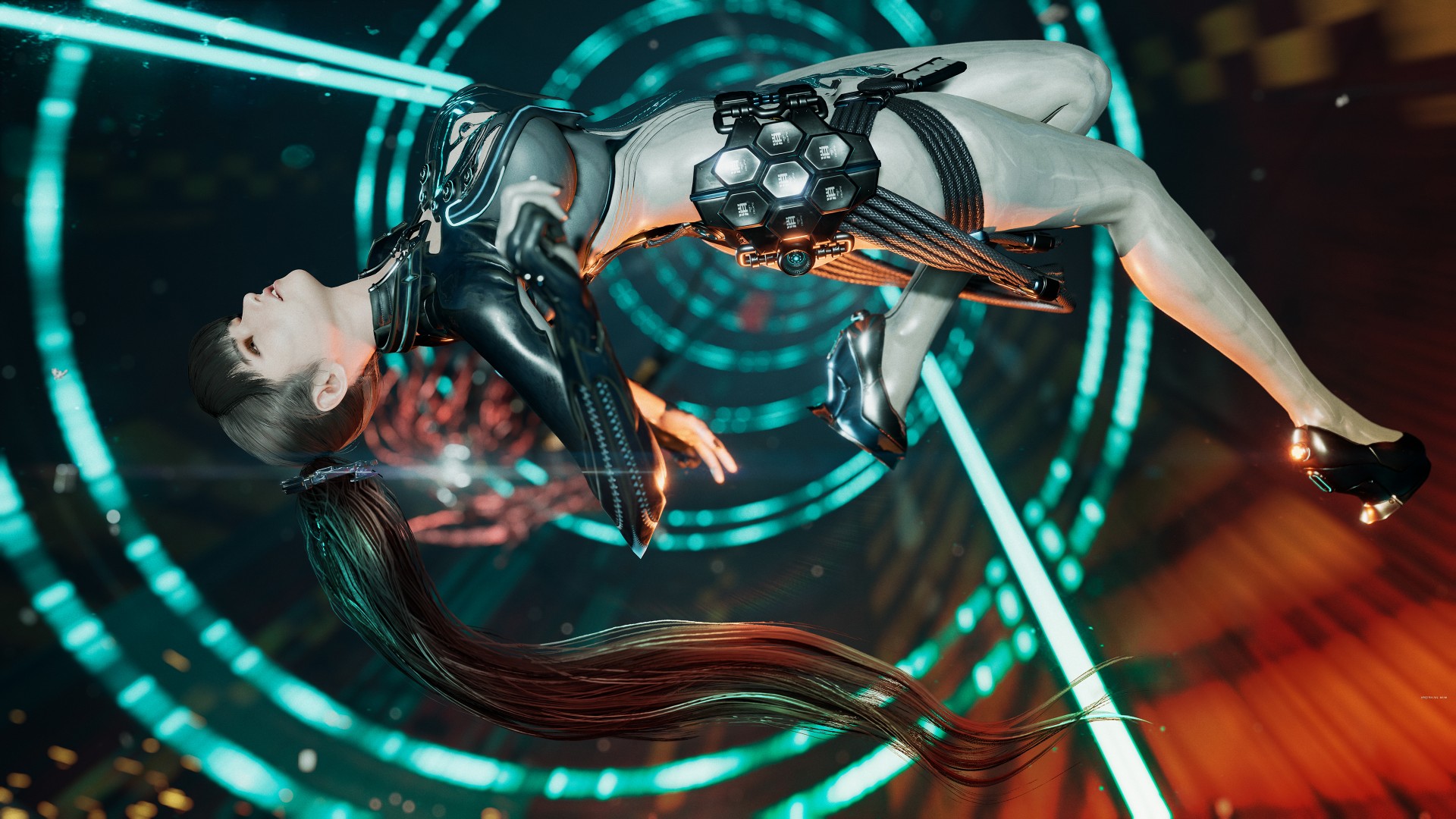
We didn’t have the best impression of Stellar Blade after spending time with the demo. Unlike certain players who poured a full game’s length of hours playing, our reception was lukewarm due to various reasons. But after finally having some time to focus on it, we now have a better understanding of its charm–and that goes beyond character design.
The game’s director has been ever-present in various gaming and tech news websites sharing nuggets about the game and reacting to the many comments made about the proportions of its female characters. That’s a rabbit hole we’re not diving into. Instead, we’re piggy-backing on one of his responses: Just pick up a controller and play it.
Steep combat learning curve
Stellar Blade’s combat didn’t click with us right away. But that’s because we approached it more like a hack-and-slash and not for the precise combo-parry sequence that it demands. A fellow reviewer aptly described our experience: It was a lot more “Soulslike” than we anticipated.
It took a while to get over that hurdle. For one, this writer isn’t particularly fond of Soulslikes. Skill issue. That’s tough considering a big part of this game’s charm is its combat. We can’t say that it fully clicked with us, but it certainly has its moments.
In combat, you have to pay attention not only to your enemy but also to how the protagonist, Eve, acts in different combo animations. If you’re not careful, you might find yourself getting hit during a lull in your combo.
You don’t have to memorize every single combo, although if you could, that’s certainly an advantage. We can compare the practice to memorizing combos of characters in Tekken, although at a milder rate.
Parrying is tricky but that’s not the only way to counter your enemies. One of the first skills you unlock is one that lets you get behind your enemy after they unleash a fatal attack (cued in with blue indicators) and hit back with your own counter. The animation looks so good that you’ll feel like an absolute badass every time you do it. It’s one of the moves that never got old throughout the entire playthrough.
As you progress through the game you’ll unlock ranged weapons that will expand your combat capabilities further. Hard combat enthusiasts should have a field day.
For more casual players, there’s no shame in switching to Story Mode which is what we did for about 70% of the playthrough. It’s easier, sure. But it can still present challenges especially during certain encounters.
The boss battles are TOUGH
We’re going to chalk this up again to skill, and perhaps patience, issue. But Stellar Blade’s boss battles are incredibly tough. Not to the point that you’ll want to throw your DualSense controller though.
What can make it frustrating is that the patterns of the enemies, especially the earlier bosses and mini-bosses, are easy to track. But they’re not exactly easy to deal with.
Parrying becomes an even more critical skill in these encounters. It’s one of the reasons why we opted to slide down the difficulty. Otherwise, this writer will never finish the game.
Pulling from different games, worlds
We have seen many compare Stellar Blade to the Nier games. Other than the setting, another big contributing factor in that comparison is the soundtrack.
During roaming, exploring, and combat, the music will change from time to time. However, they stick to this theme that’s a little eerie. It’s hard for us to describe but it’s almost like a crescendo that never quite swells up. It matches the game’s world perfectly — it feels hollow and devoid of life but still has a sliver of hope.
Combat isn’t the only thing you’re doing here. While it’s mostly linear at first, Stellar Blade offers a healthy mix of exploration, platforming, and puzzle-solving.
The puzzles don’t get in the way of the pacing. They’re quite engaging and offer a decent level of challenge. Roaming and exploration will yield you loot to improve your gear and stats. Occasionally, a Naytiba (the game’s primary foils) will surprise you for a good jumpscare moment.
Stellar Blade doesn’t reinvent anything nor does it offer anything particularly new or groundbreaking. But everything it borrowed from other games is retrofitted to match the game’s vibe and overall aesthetic. The result is a polished experience of familiar gaming mechanics.
Eve
Another aspect that did not grab us as much during the demo is the main character, Eve. The first hour of the game doesn’t do much to endear the player to her.
That slowly changes as you play through the game. Through a mix of cut scenes and world-building collectibles, you get a better sense of what Eve is, her mission, and ultimately her purpose.
If you’re familiar with the animé Violet Evergarden, Eve and that show’s protagonist share a similar character arc. They initially seem one note and bland, but the layers are peeled back as you learn more about them and how they relate to the world and the people around them.
Is she hot? Hell yeah. But as cliché as it is, she’s certainly more than what meets the eye.
Should you play Stellar Blade?
Unlike the PlayStation 5 exclusive that immediately preceded it, Stellar Blade has plenty in common with past PS5 exclusives — visually captivating, cinematic experiences, with satisfying gameplay.
Its level of challenge is closer to Sekiro and Bloodborne but it’s also not quite as difficult. In the same category but certainly not in the same stratosphere.
It also has an alluring charm that goes beyond its aesthetics. As mentioned earlier, nothing about it is particularly new or groundbreaking. But it’s polished and cohesive. There’s something about the overall feel of the game that draws you in and makes you want to see it through.
Stellar Blade is a Day 1 purchase if you’re up for the challenge. And if you consider the game director’s goal of having a high quality AAA console game from South Korea which is dominated by PC and mobile gaming, we say they did just that. Now, it’s just up to us to pick-up the controller and play.
Reviews
Challengers review: A thrilling drama wrapped as a tennis anime
Catch it in Ayala Cinemas starting April 24th

Tennis is more than just hitting a ball really hard with a racquet. There are player tics, serving techniques, mind games, and, of course, drama off the court. Challengers, starring Zendaya, takes the entire game and turns it into a dramatic thriller worthy of Wimbledon.
In Challengers, Art Donaldson (Mike Faist) is an aging tennis superstar desperate for one more big win. His wife Tashi (Zendaya), a retired tennis star in her own right, does everything to coach Art back to his winning ways. Opposite them is Patrick Zweig, a former-friend-turned-rival, facing Art in the final match of a Challenger.
As premises go, Challengers seemingly presents a straightforward sports drama. It’s a simple one-versus-one, after all. However, the film’s 2-hour-plus runtime hides a more complex drama.
The second-strangest ménage à trois in film
The film starts in media res: the first set of the final match. It doesn’t tell you who Art, Patrick, or Tashi is. It’s just a friendly match. There are, however, questions abound. Why is Zendaya’s character looking intently at one of the players? Why is the other player concerned that she is looking at his rival and not him? Who are these people?
Before you can ponder each question, the film takes you through multiple time jumps. The earliest (and longest) of which — thirteen years ago — sets up the story. Art and Patrick are two best friends and tennis prodigies teaming up to decimate the competition at their school. Everything changes when the two friends catch a match of another young prodigy, Tashi Duncan.
Both friends engage in a friendly competition to see who can successfully flirt with her. The sequence ends in the second-strangest ménage à trois committed to film. (To see the strangest one, catch Alfonso Cuarón’s Y tu mamá también, a clear inspiration to Challengers.)
The time jumps don’t end there. The story quickly volleys back and forth between different times in the past and the present, including years, months, weeks, and even hours ago. Sometimes, the skips result in the cinematic equivalent of whiplash from watching a tennis ball rapidly travel from left to right. But if you just follow the ball, it ends with one of the most thrilling, edge-of-your-seat dramas this year.
Blink and you’ll miss it
Despite how creative the time skips already are, Challengers shines with its subtler elements: the tiny movements, the tics that seasoned sports watchers can catch. Much like how a play-by-play commentator directs a viewer’s attention to what makes a player tick, the film subtly shows you elements of an even deeper story that it may or may not expound on.
Early on, Challengers shows a blink-and-you’ll-miss-it scene featuring Tashi’s knees. If you weren’t paying attention, you might have missed a scar from a surgical incision, hinting at why Tashi retired from the sport.
In that particular example, the film does dwell on it a bit in a past flashback. However, there are plot points that the film just drops on audiences with nary an explanation. For example, you might see telltale injection marks up Patrick’s wrist or a short-but-telling rehab session for Art. The film drops these nuggets only for the viewer to ponder. They’re short, but they paint a compelling picture to complement the action on the court.
It’s a tennis anime
In essence, Challengers is just about a tennis match between two emboldened competitors. However, like an anime battle that takes ten episodes to resolve, the film understands that the sport is not just about results: it’s about all the tiny movements, strategies, and dramas. If Wimbledon was this thrilling all the time, I should probably tune in a lot more.
Challengers shows exclusively in Ayala Cinemas starting April 24th.
-

 Features2 weeks ago
Features2 weeks agoFortify your home office or business setup with these devices
-

 Reviews2 weeks ago
Reviews2 weeks agorealme 12+ 5G review: One month later
-

 Gaming2 weeks ago
Gaming2 weeks agoNew PUMA collection lets you wear PlayStation’s iconic symbols
-

 Accessories2 weeks ago
Accessories2 weeks agoMarshall Major V: Reasons Why I Love It
-

 Gaming2 weeks ago
Gaming2 weeks agoMore PlayStation 5 Pro specs have been leaked
-
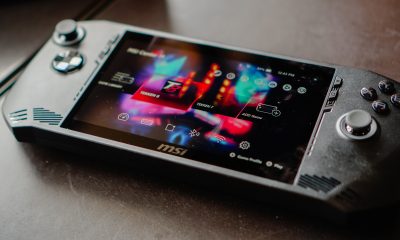
 Features1 week ago
Features1 week agoWhy choose the MSI Claw?
-

 Gaming2 weeks ago
Gaming2 weeks agoUbisoft is taking away copies of The Crew from your library
-

 Gaming2 weeks ago
Gaming2 weeks agoOne Piece Odyssey coming to Nintendo Switch
















